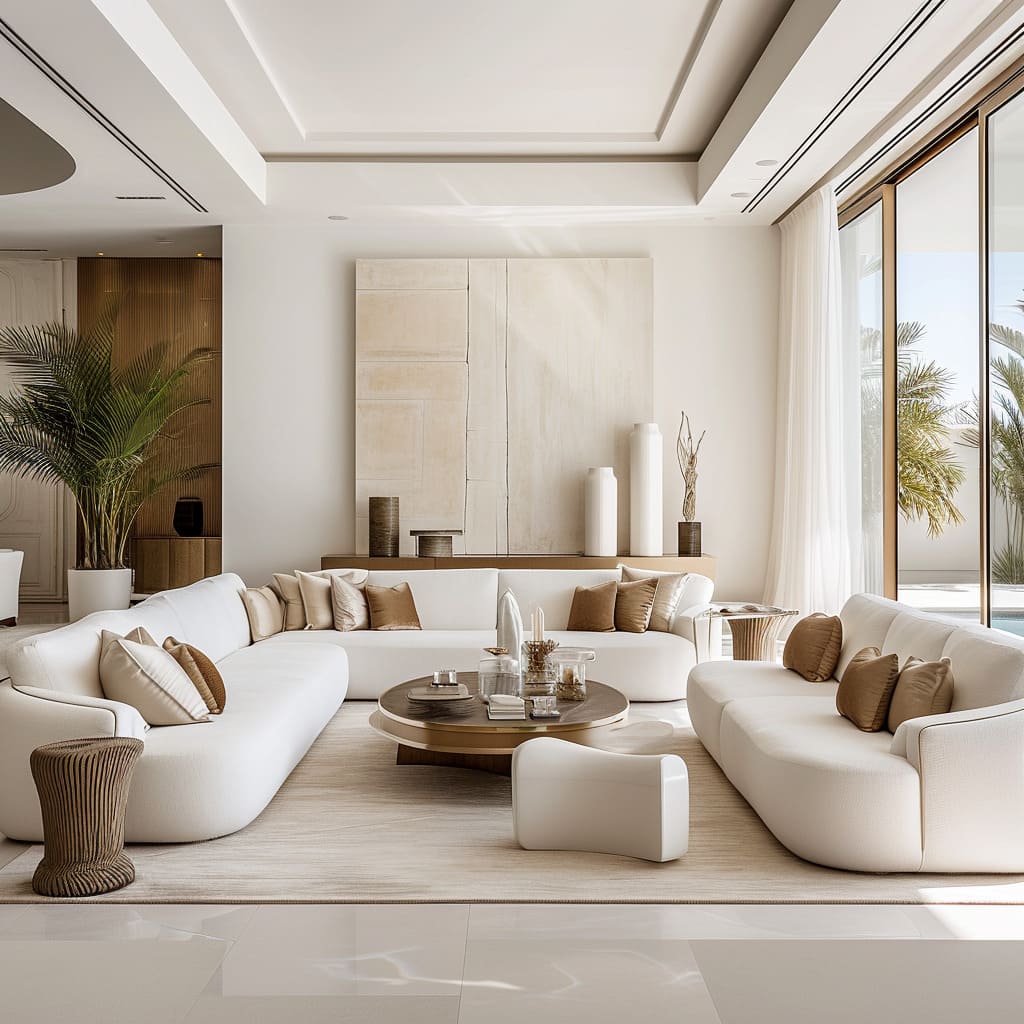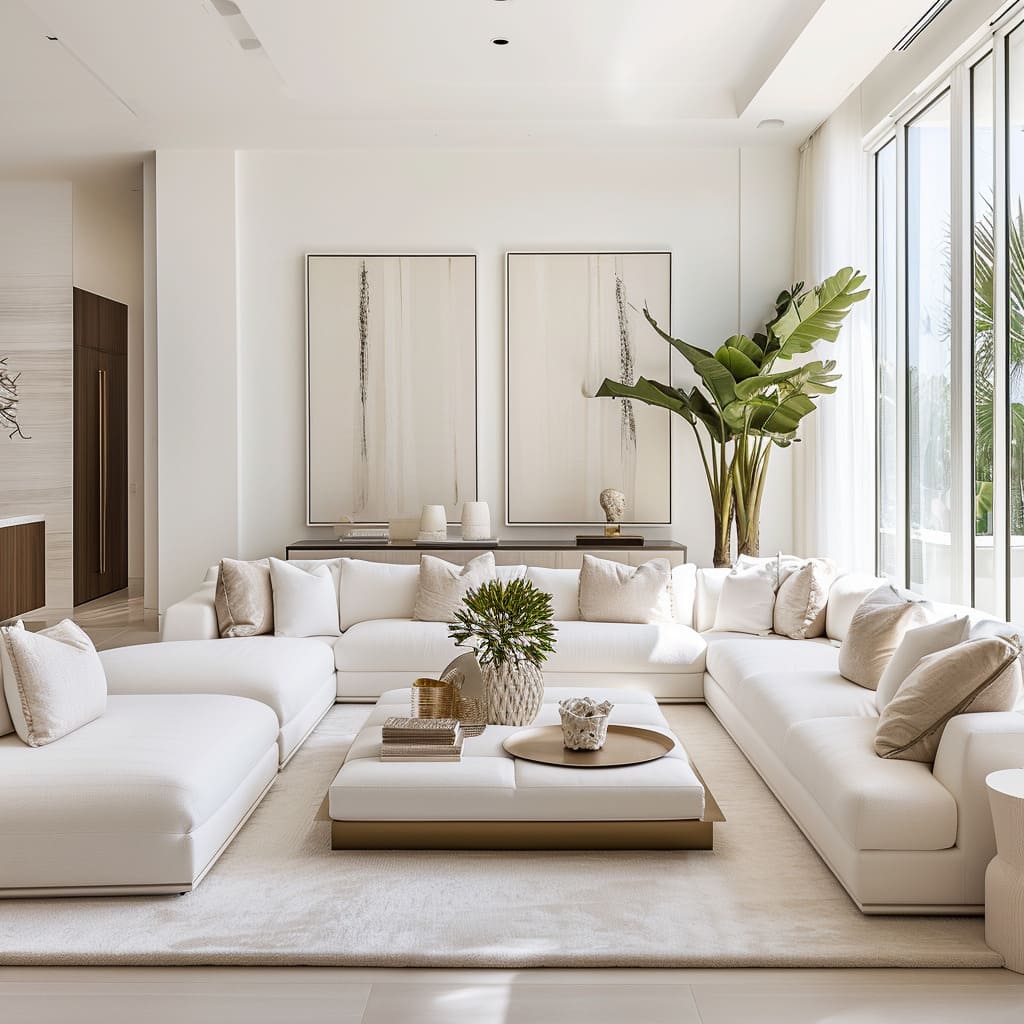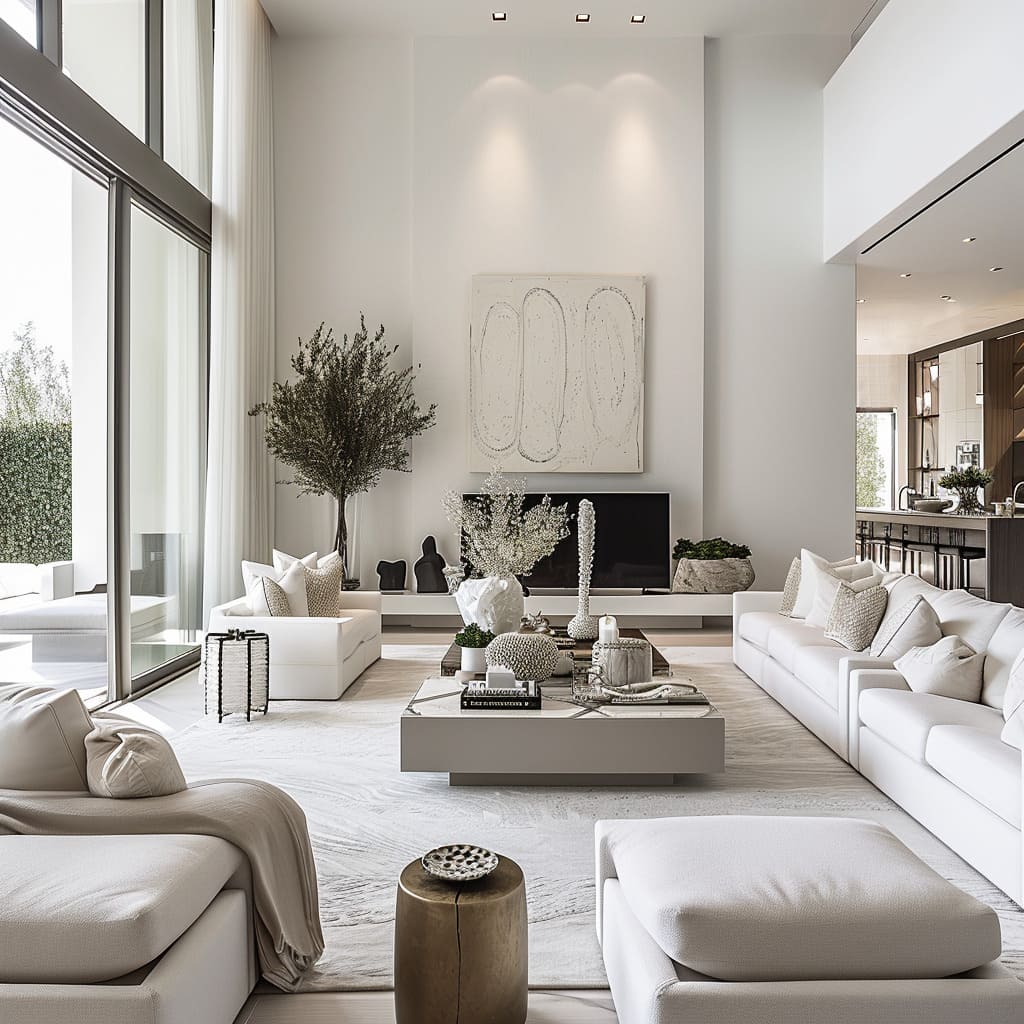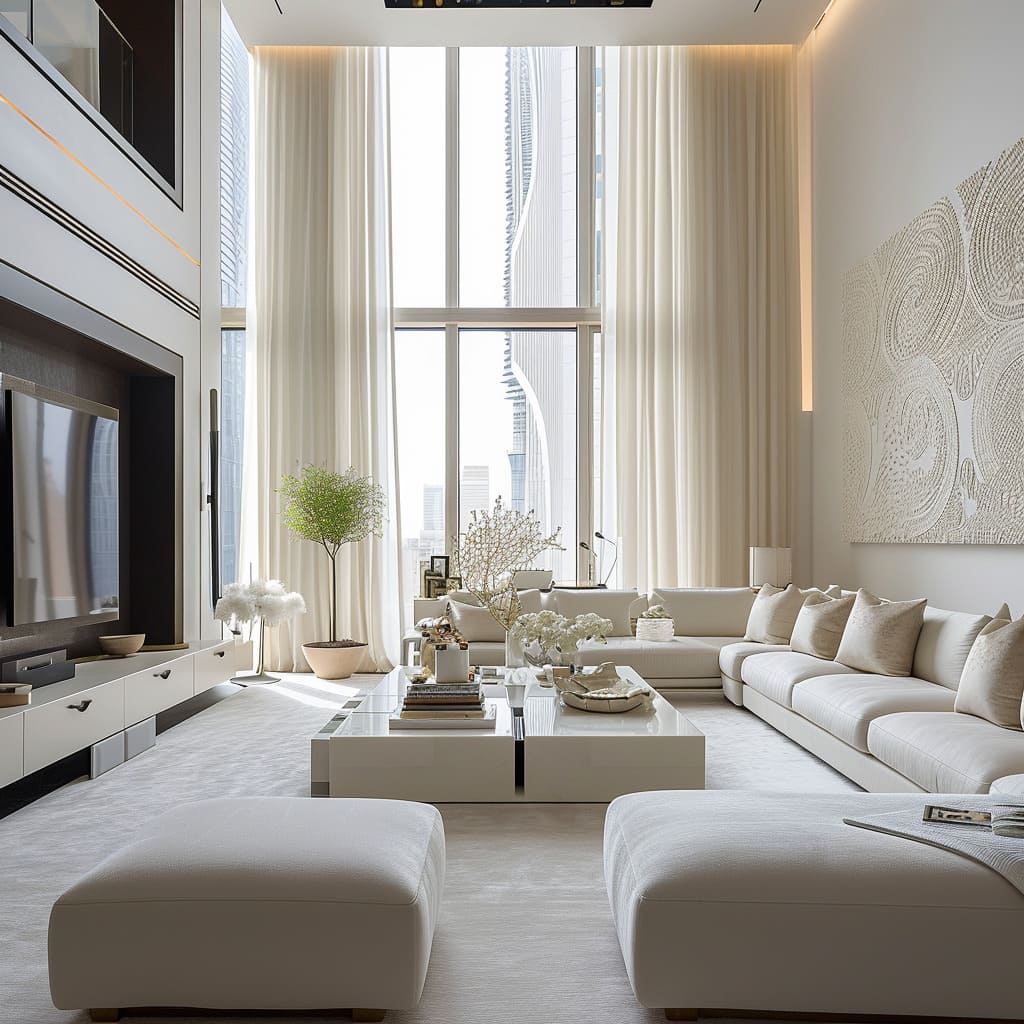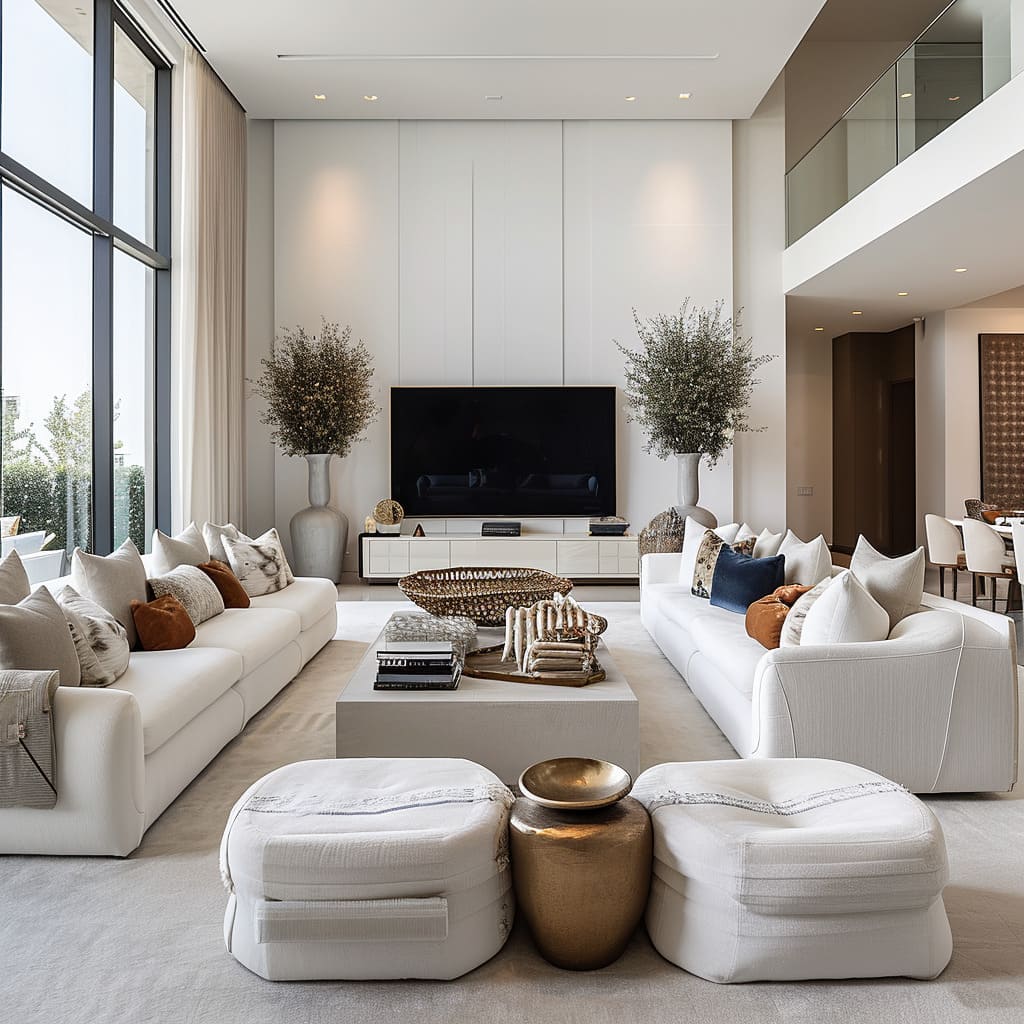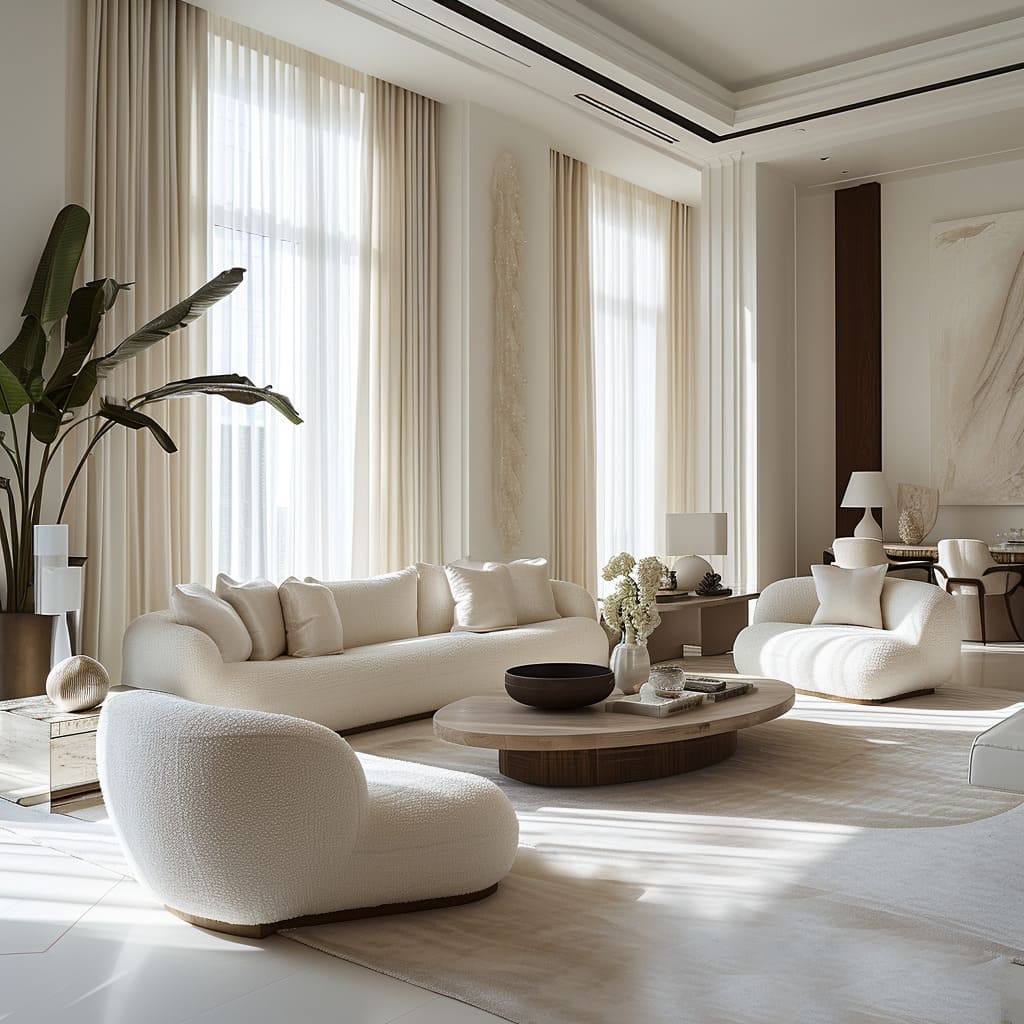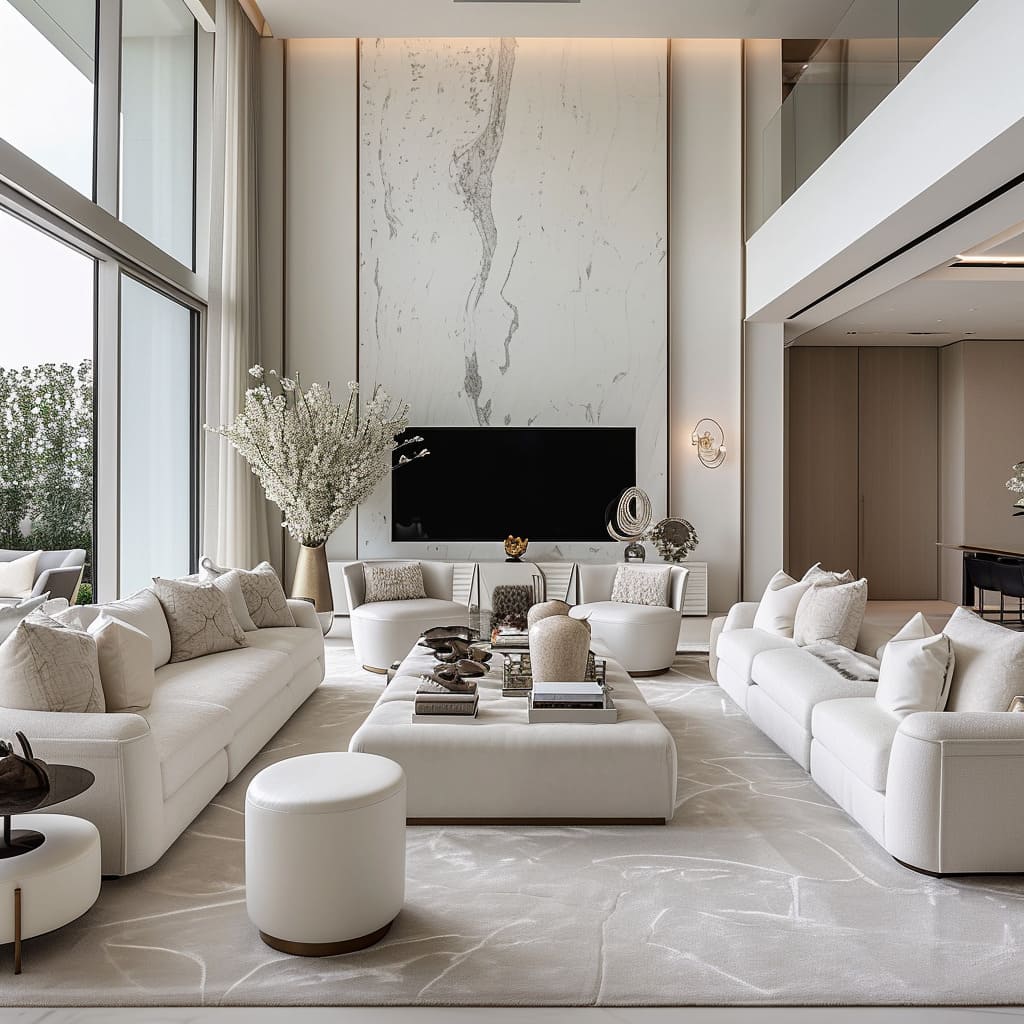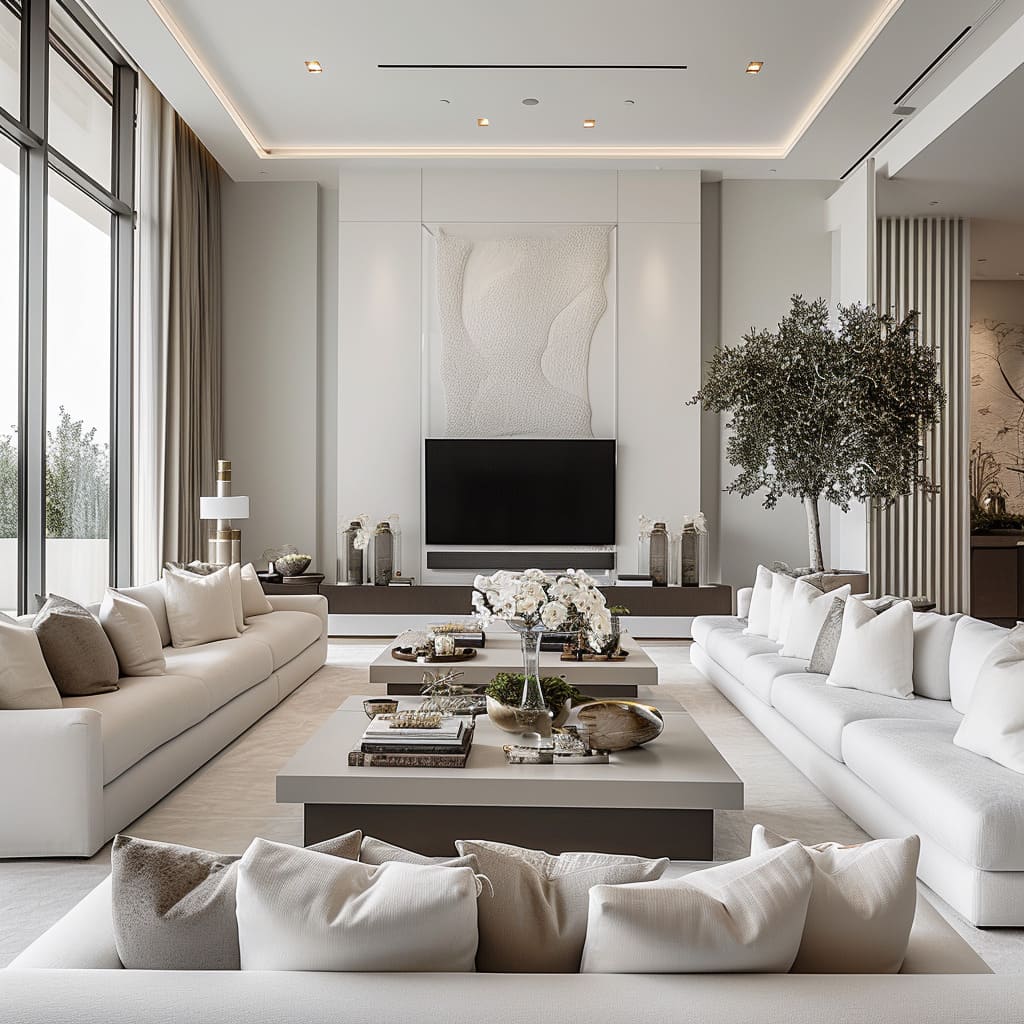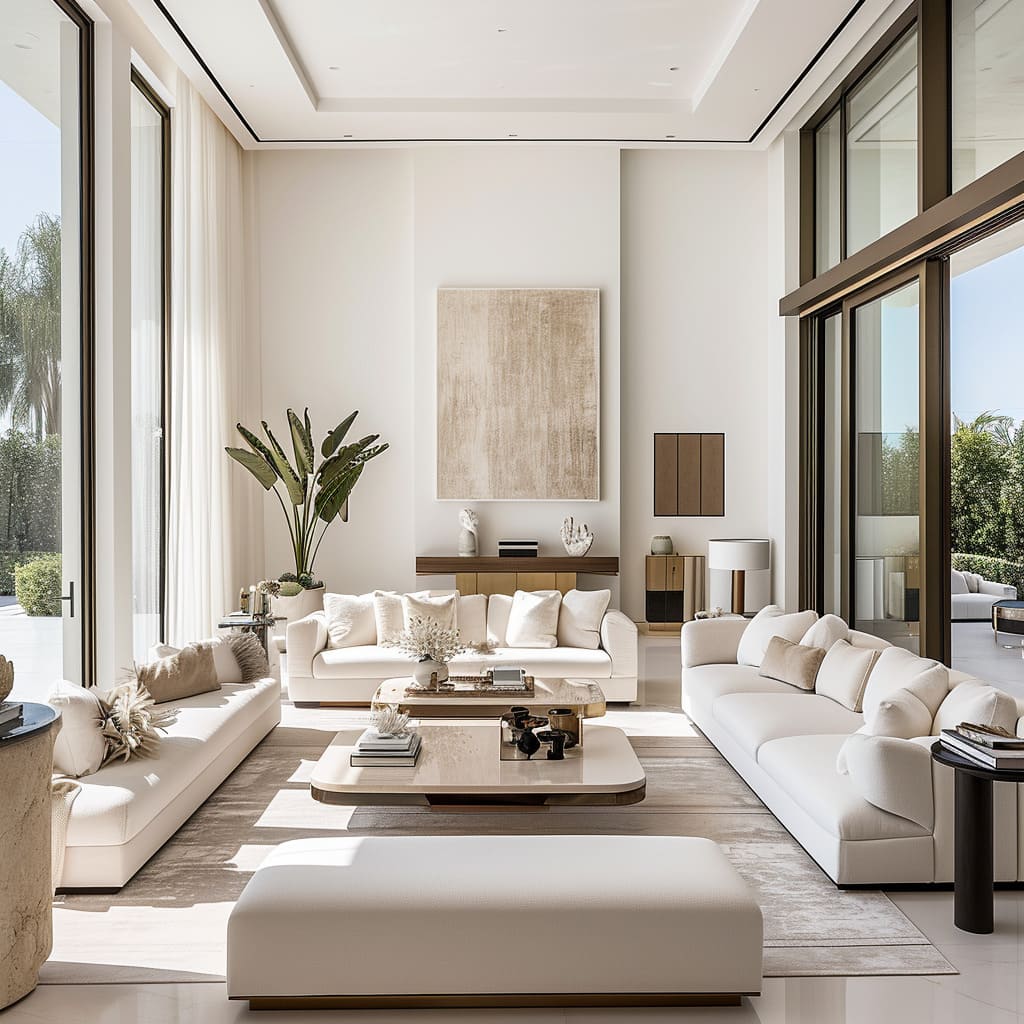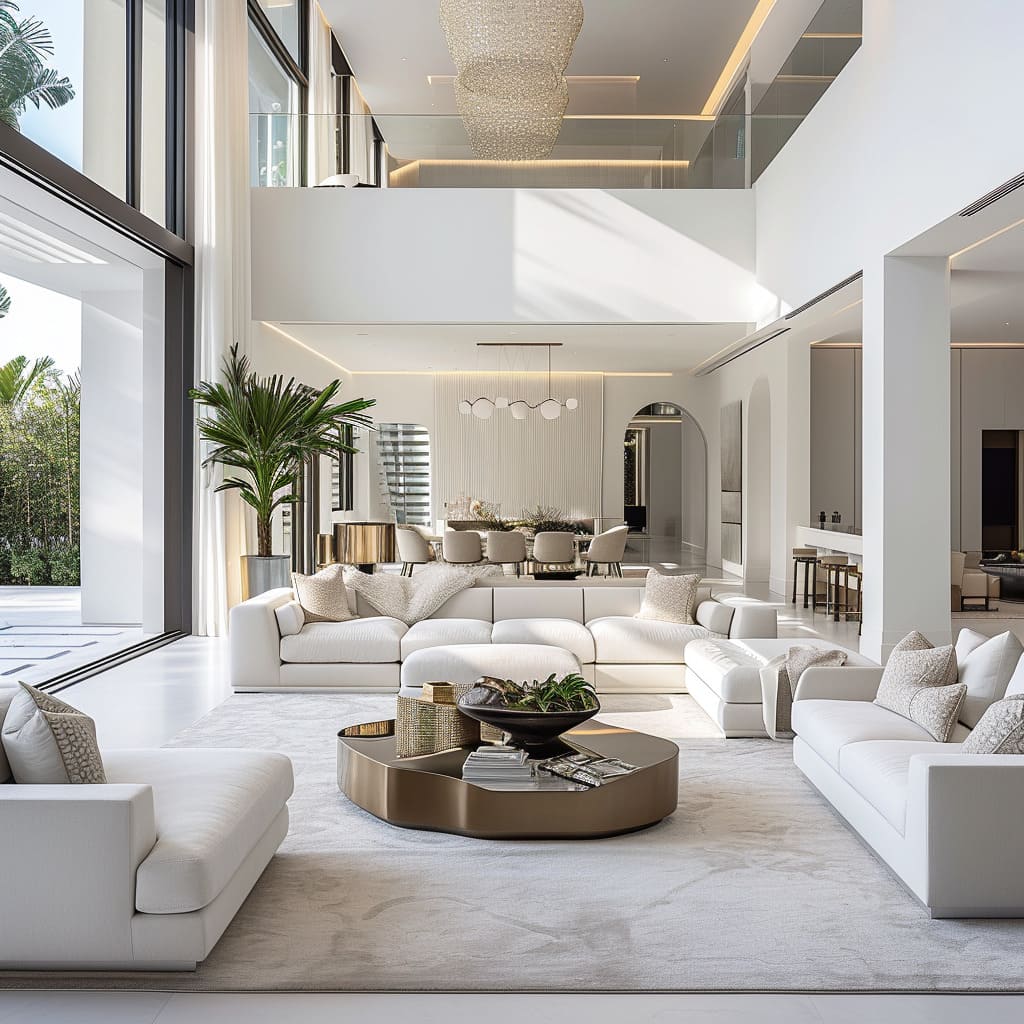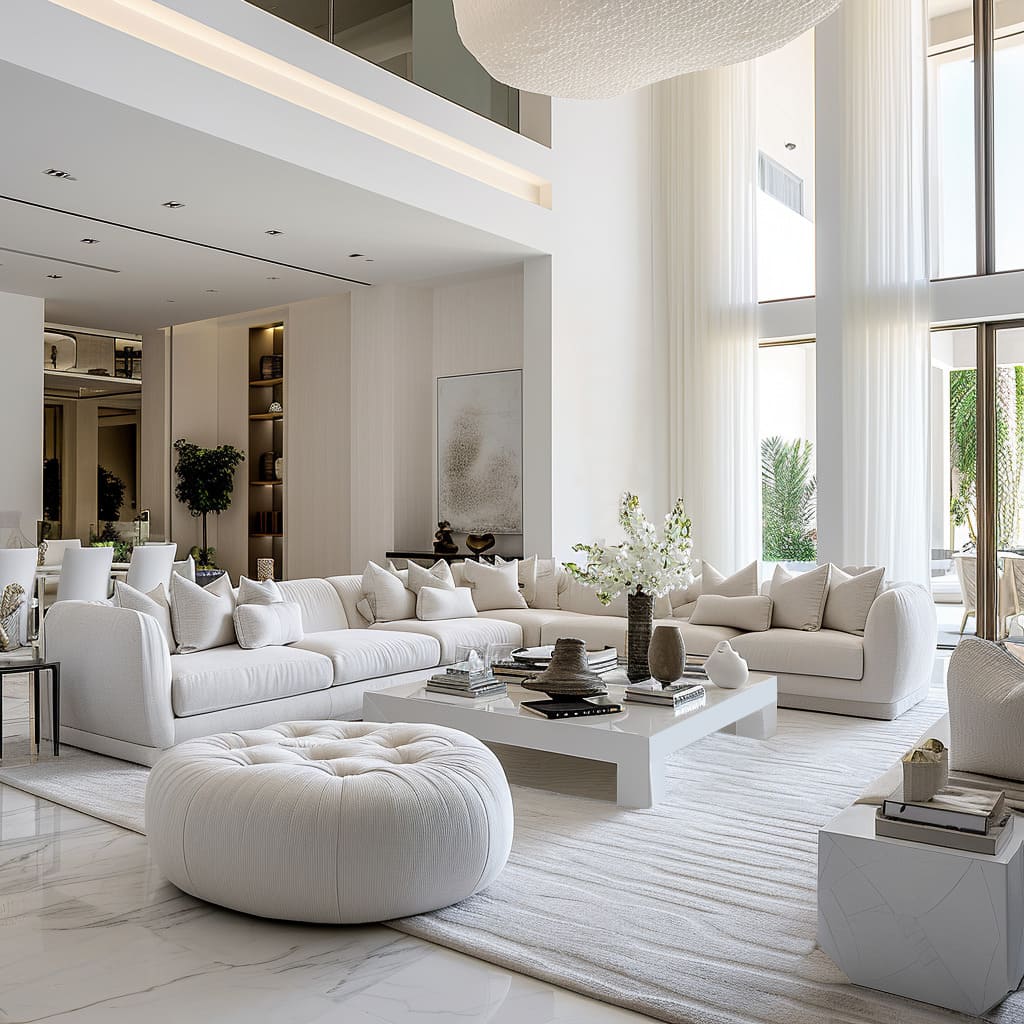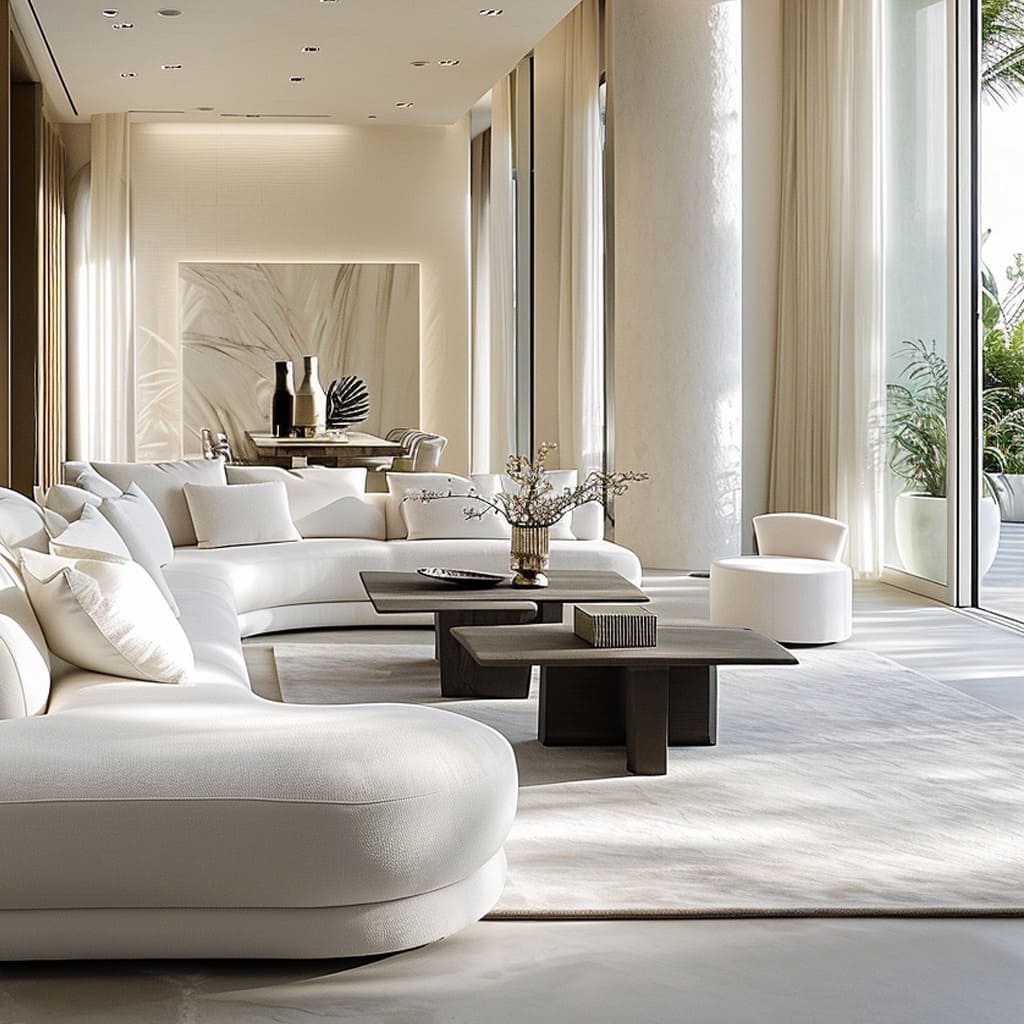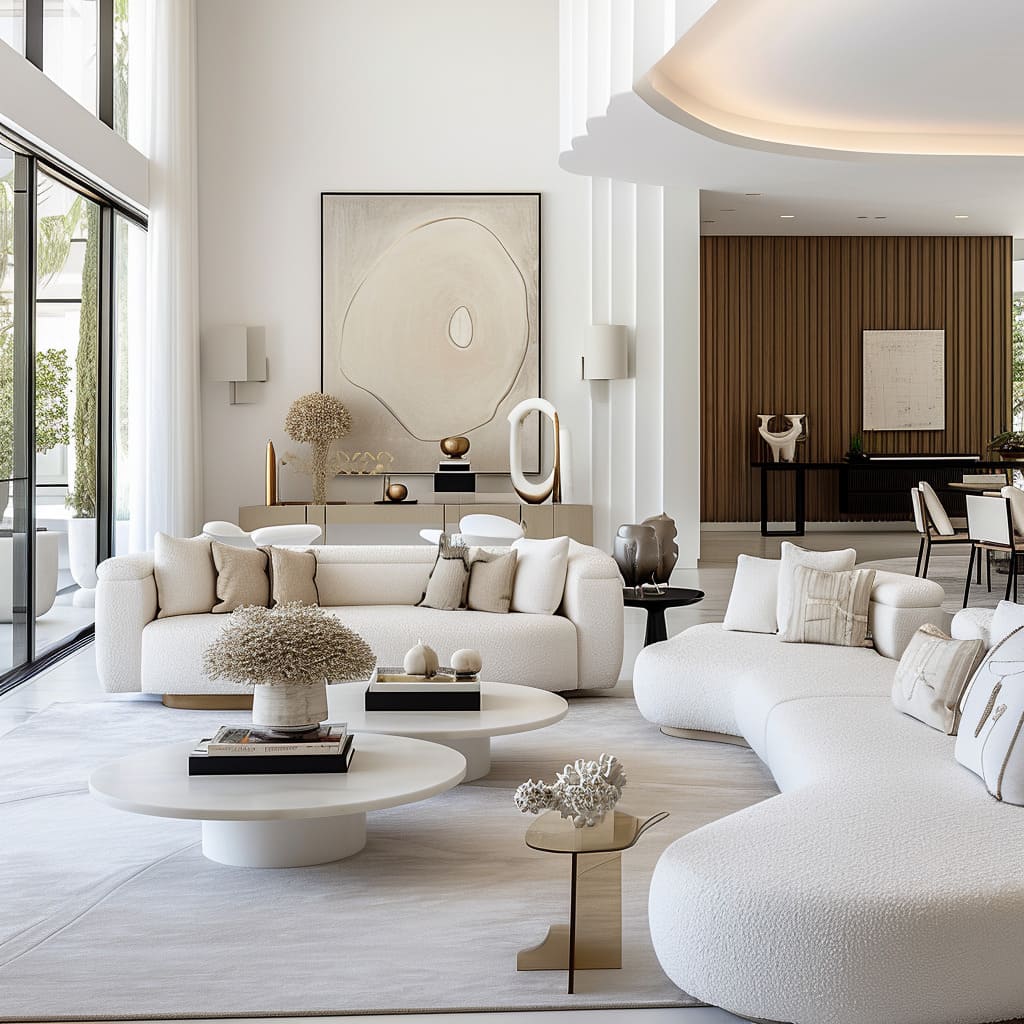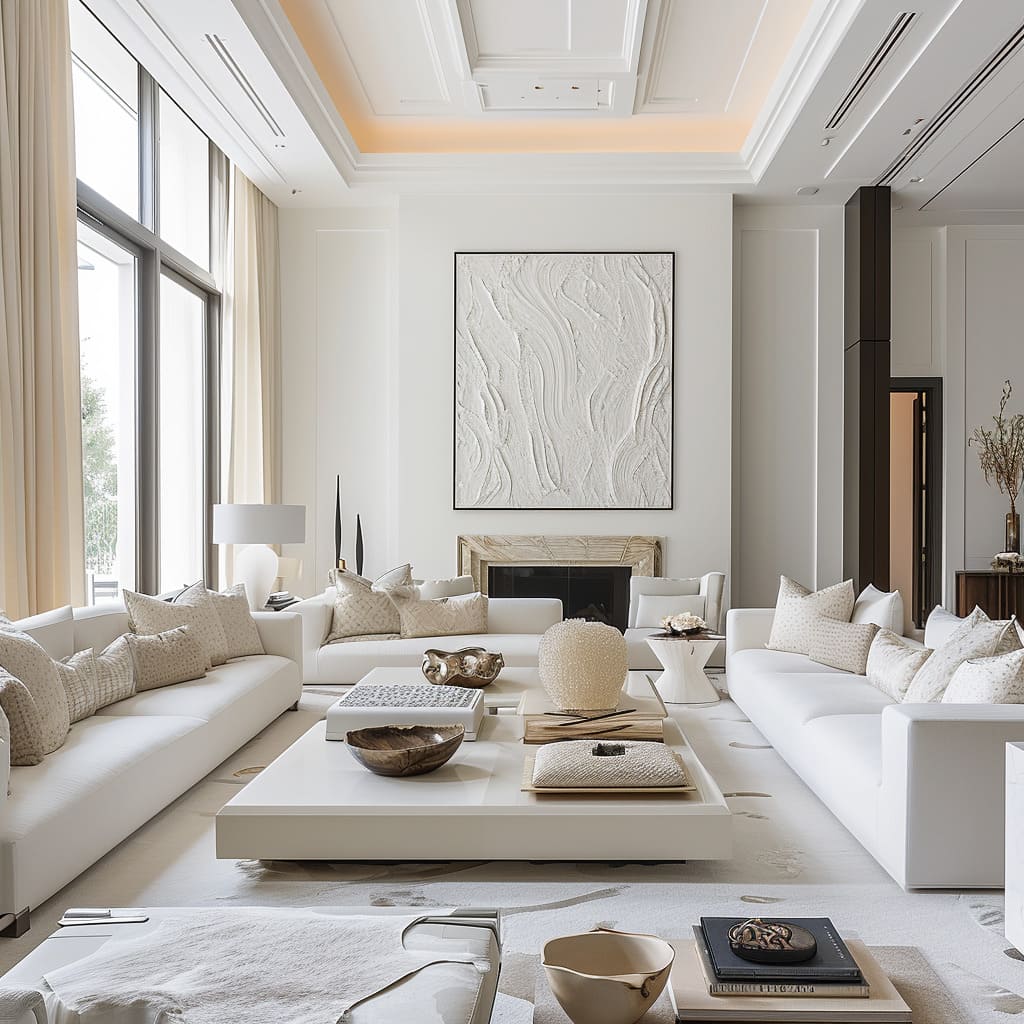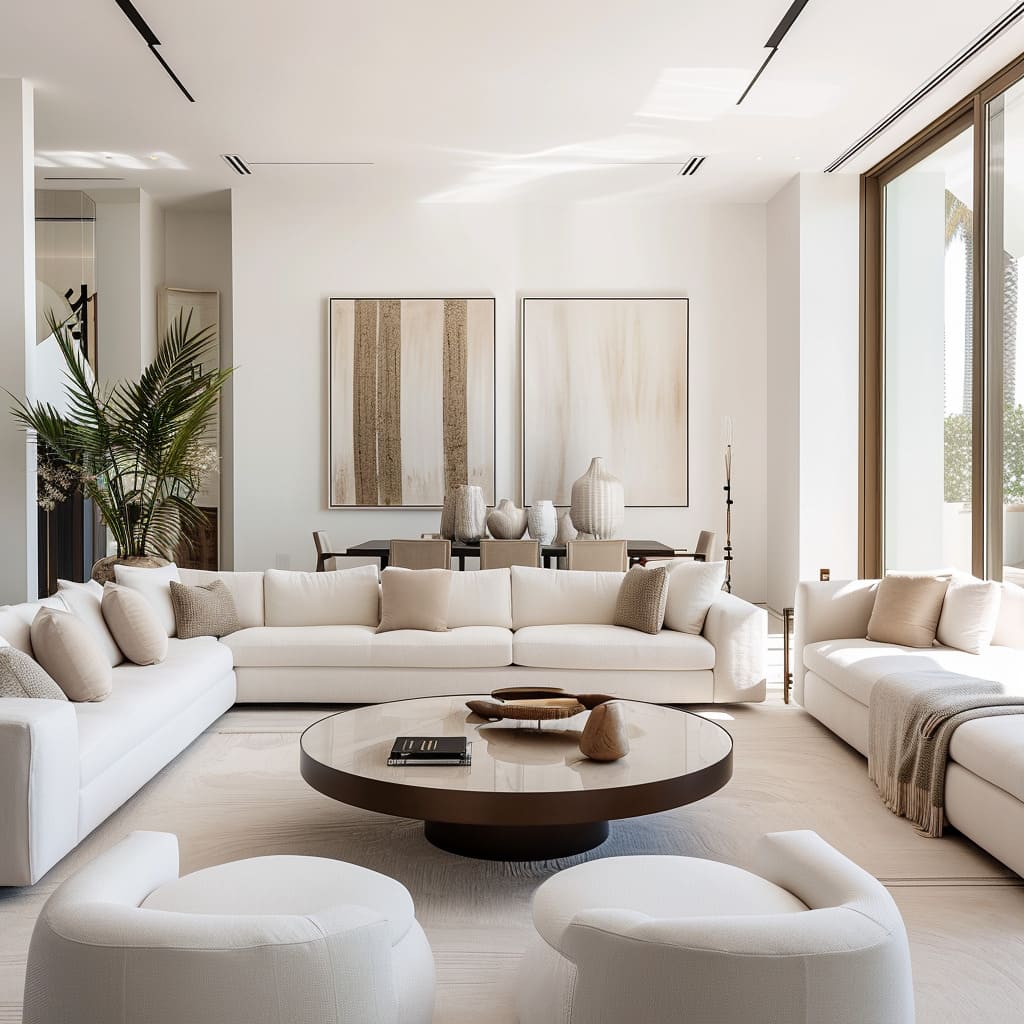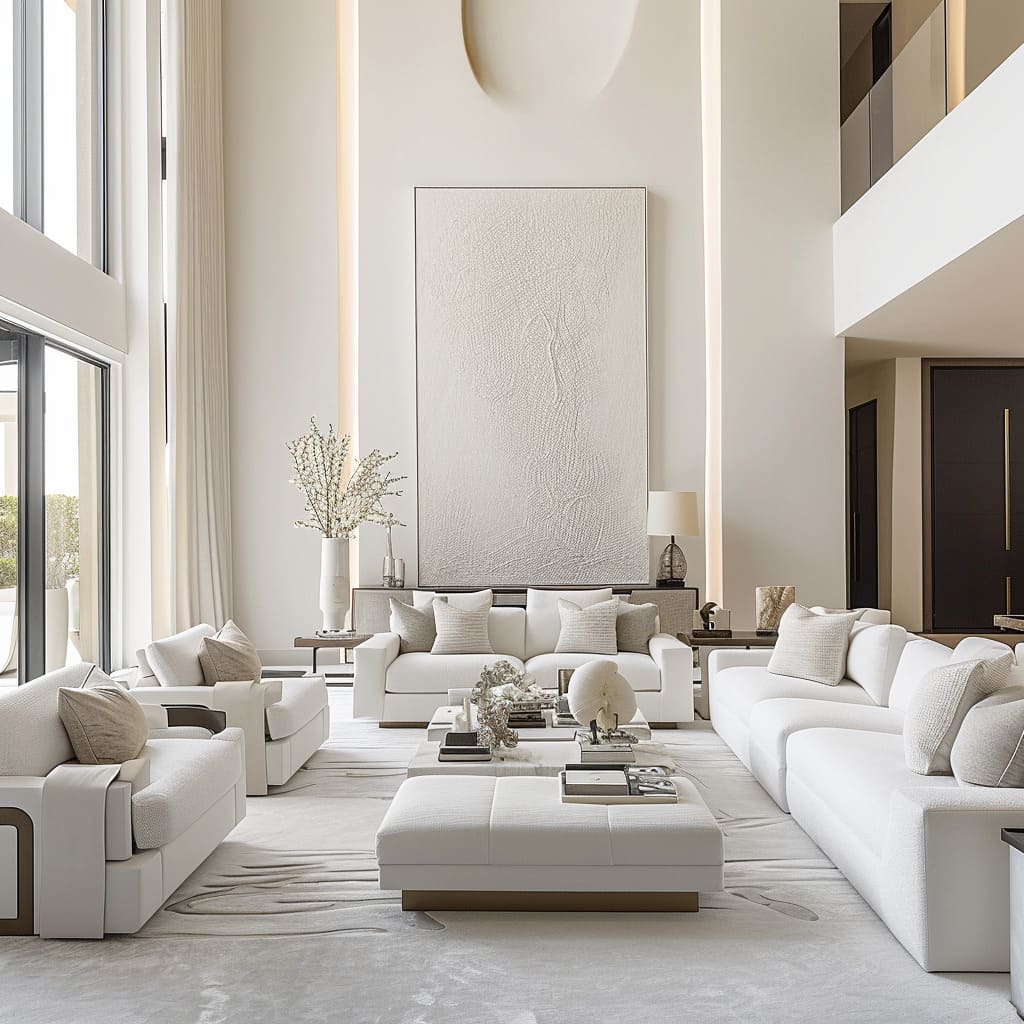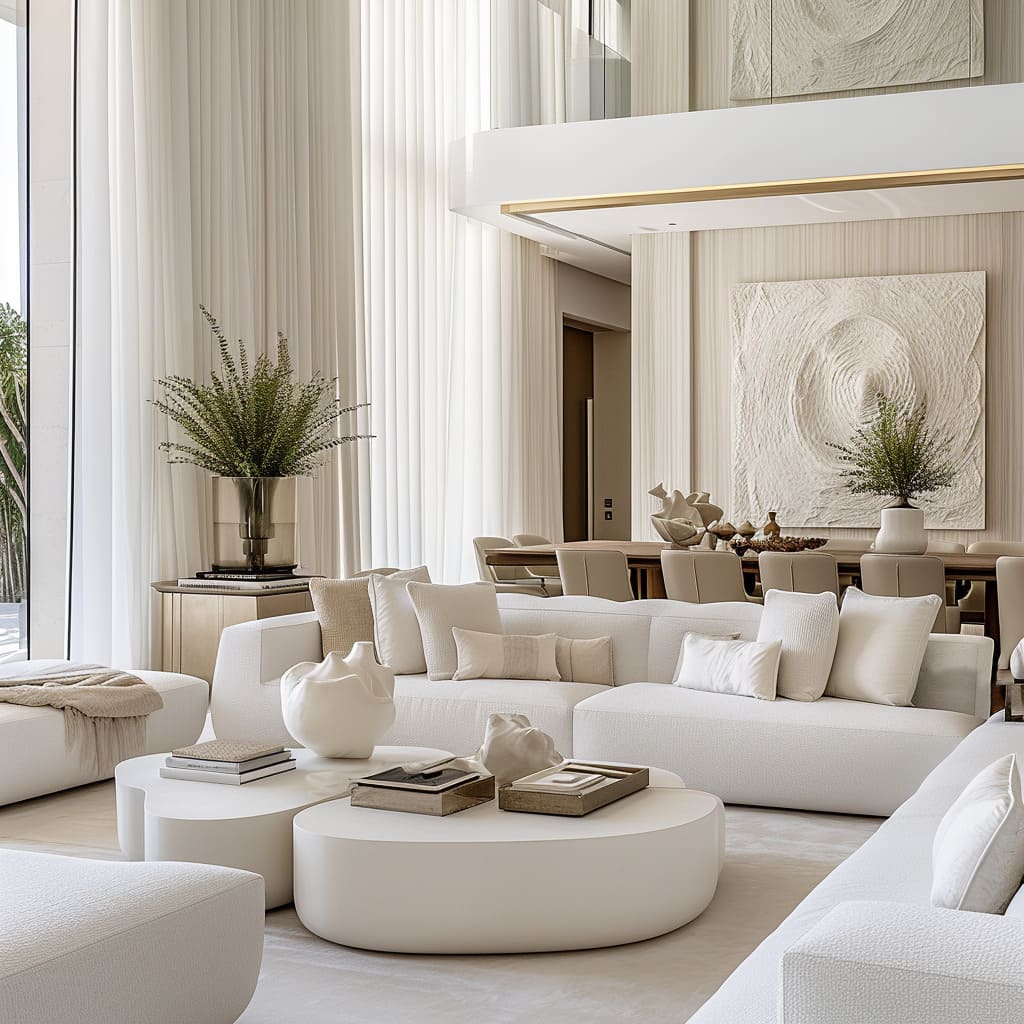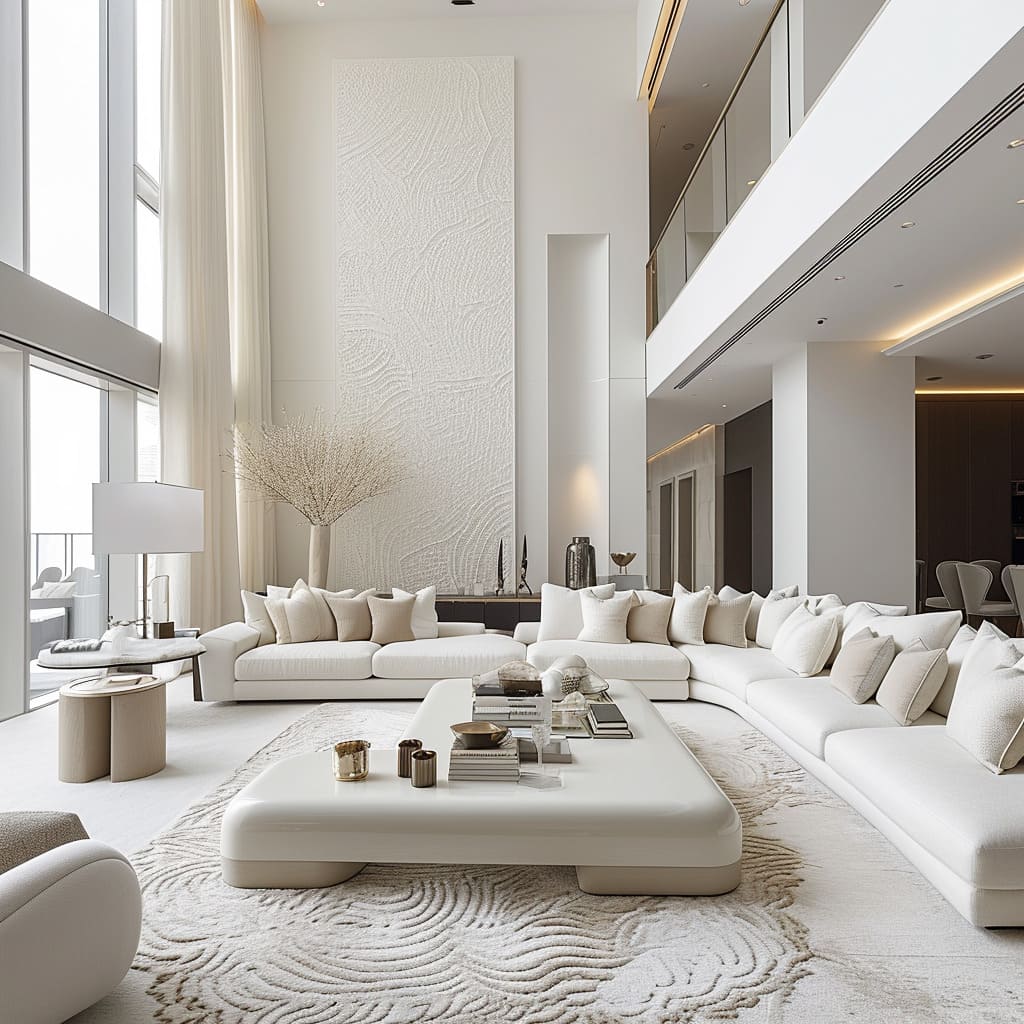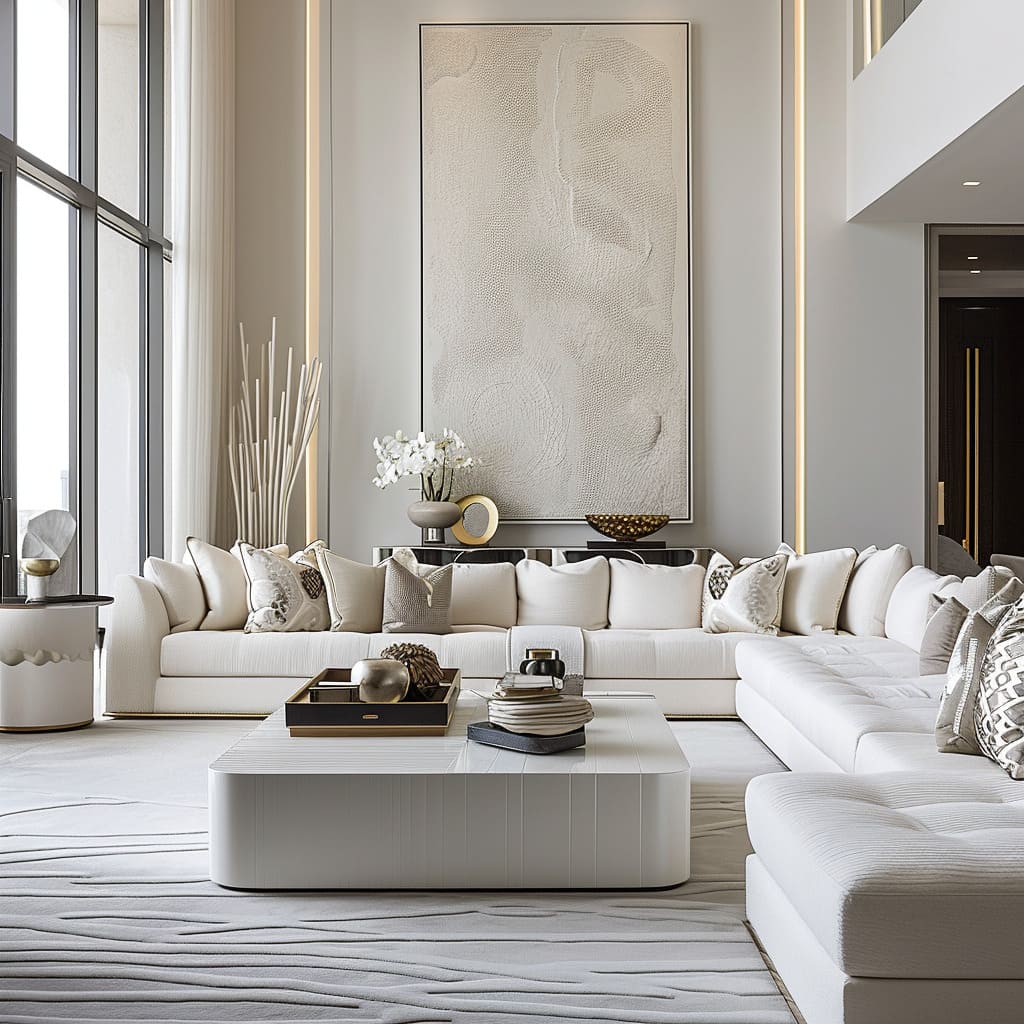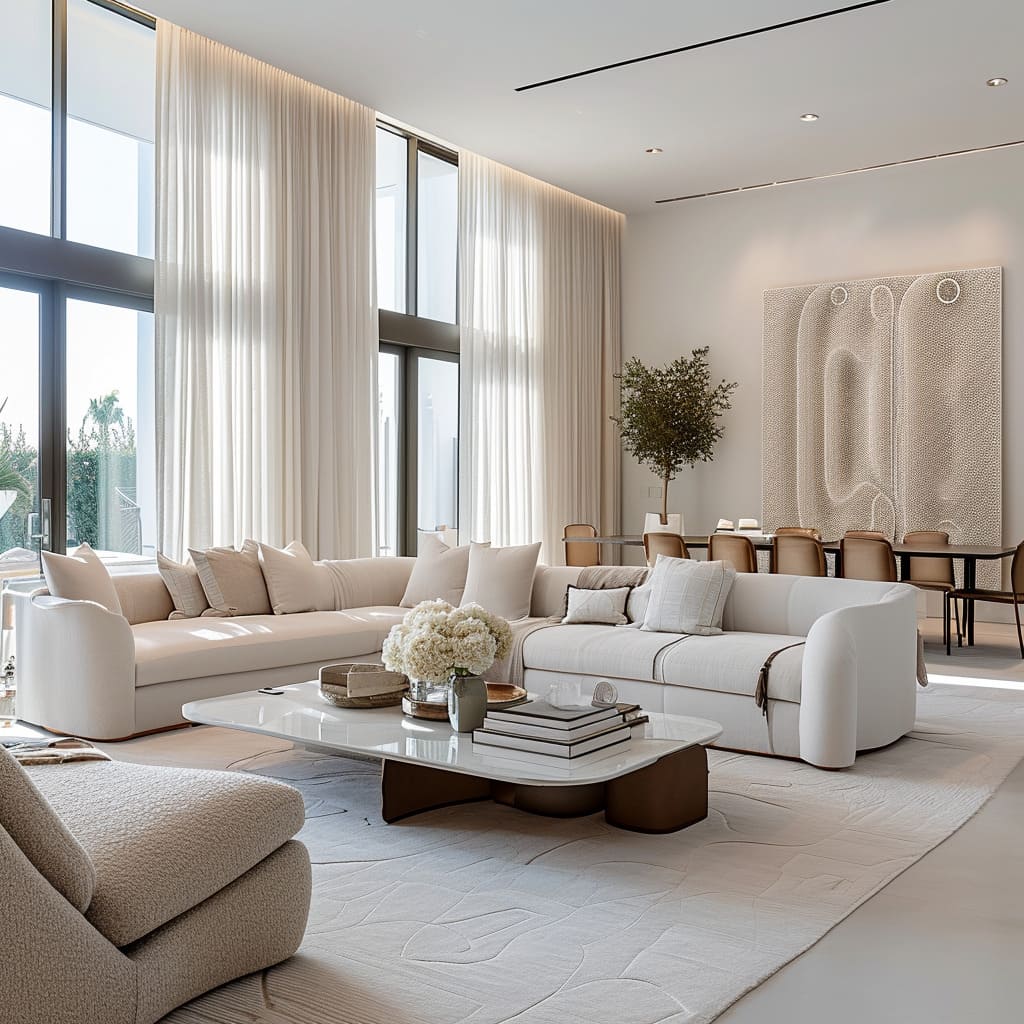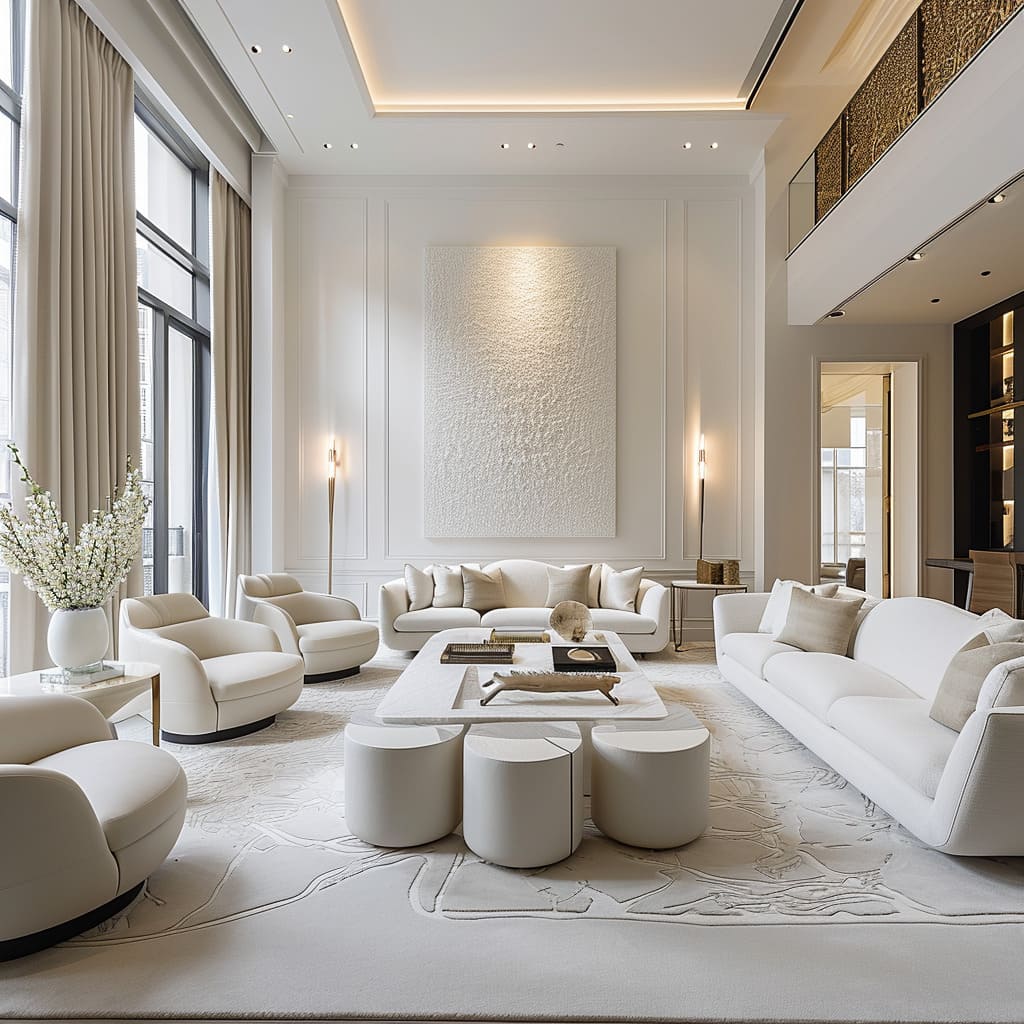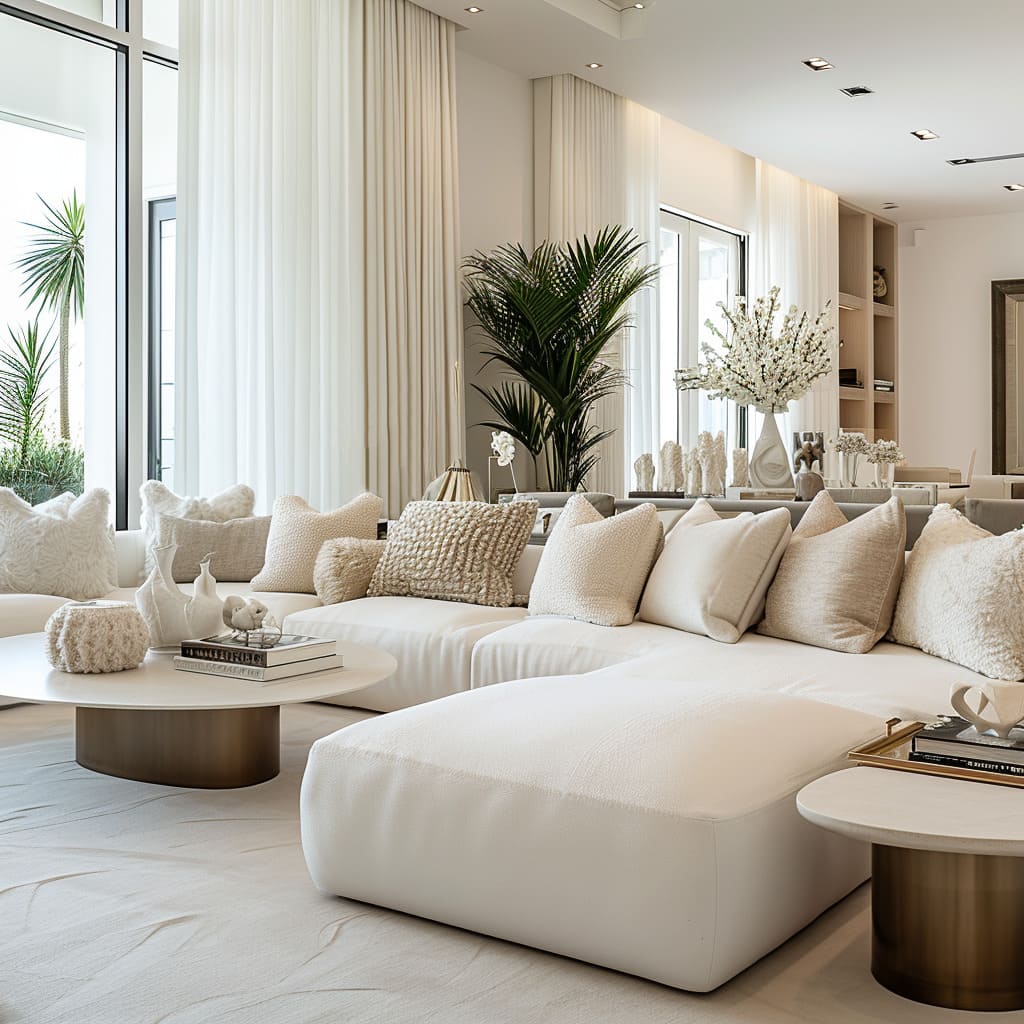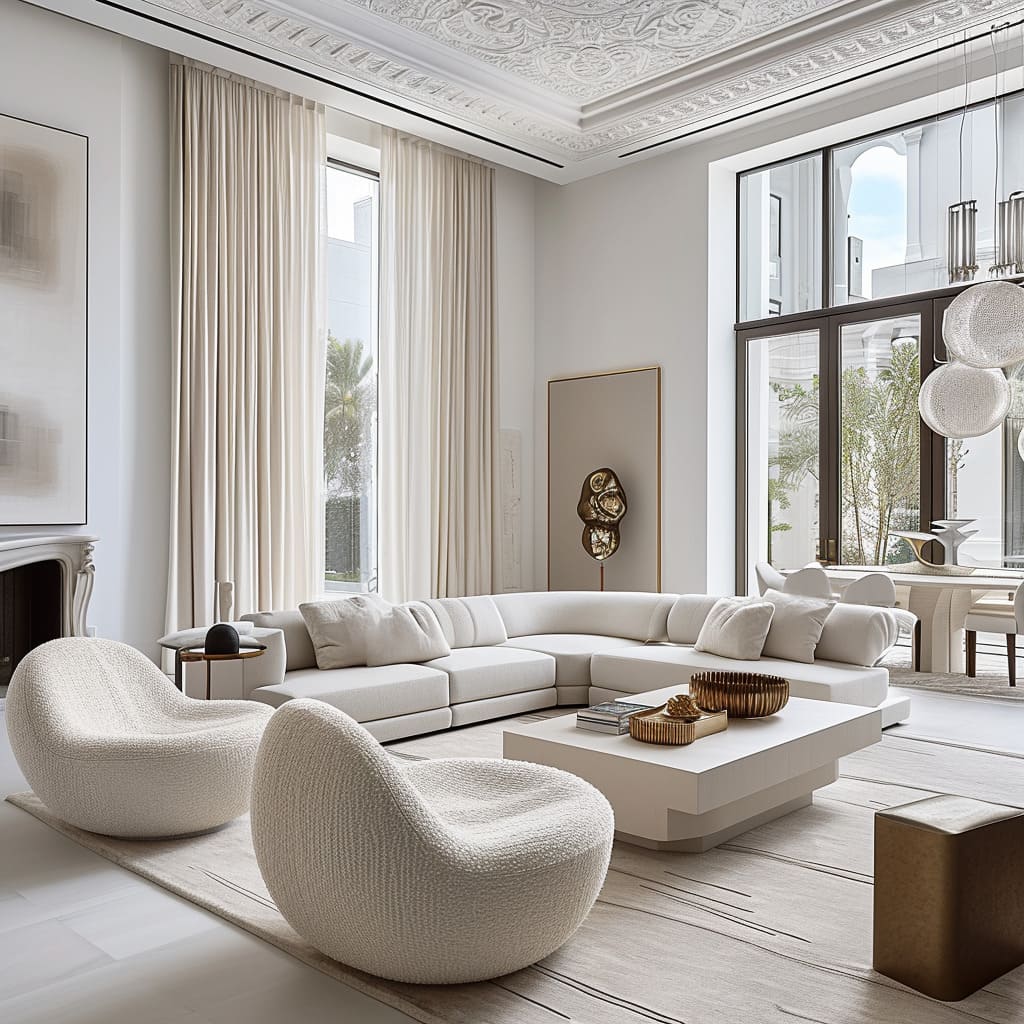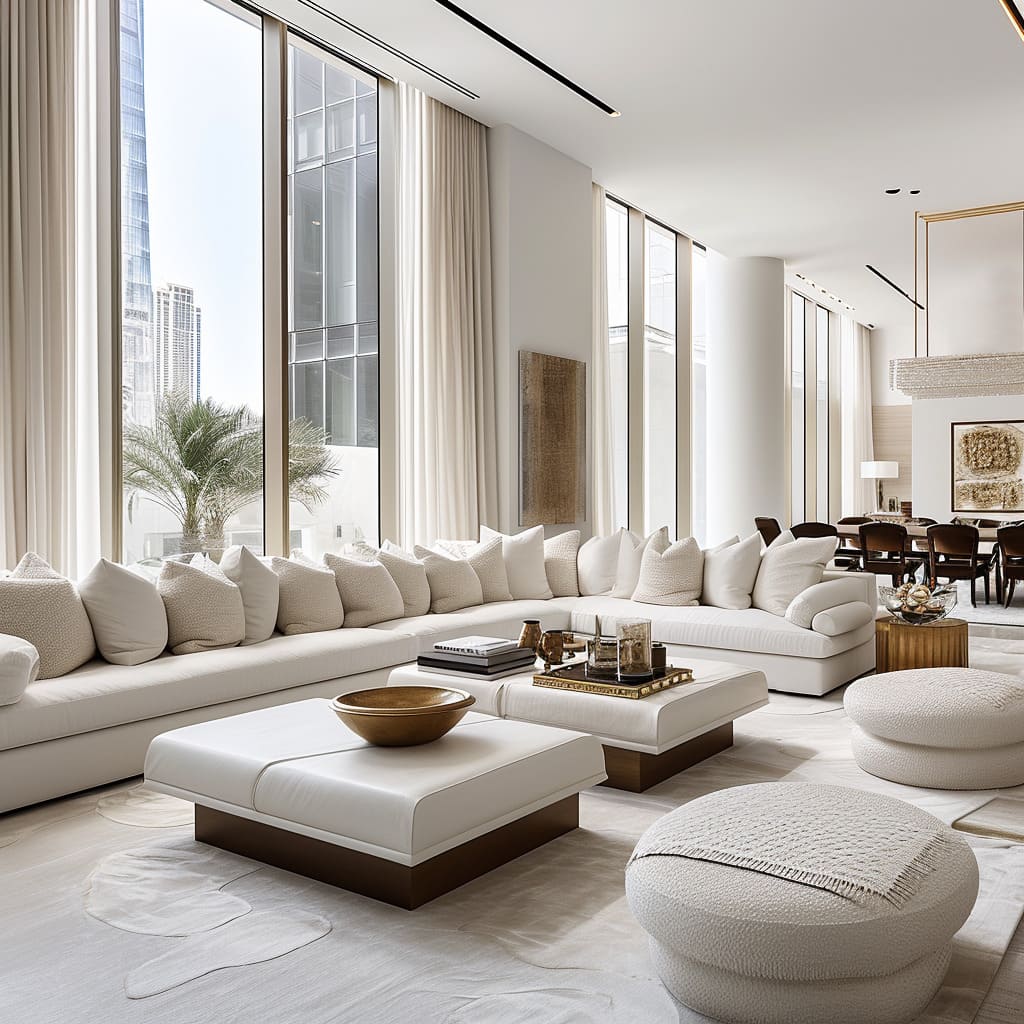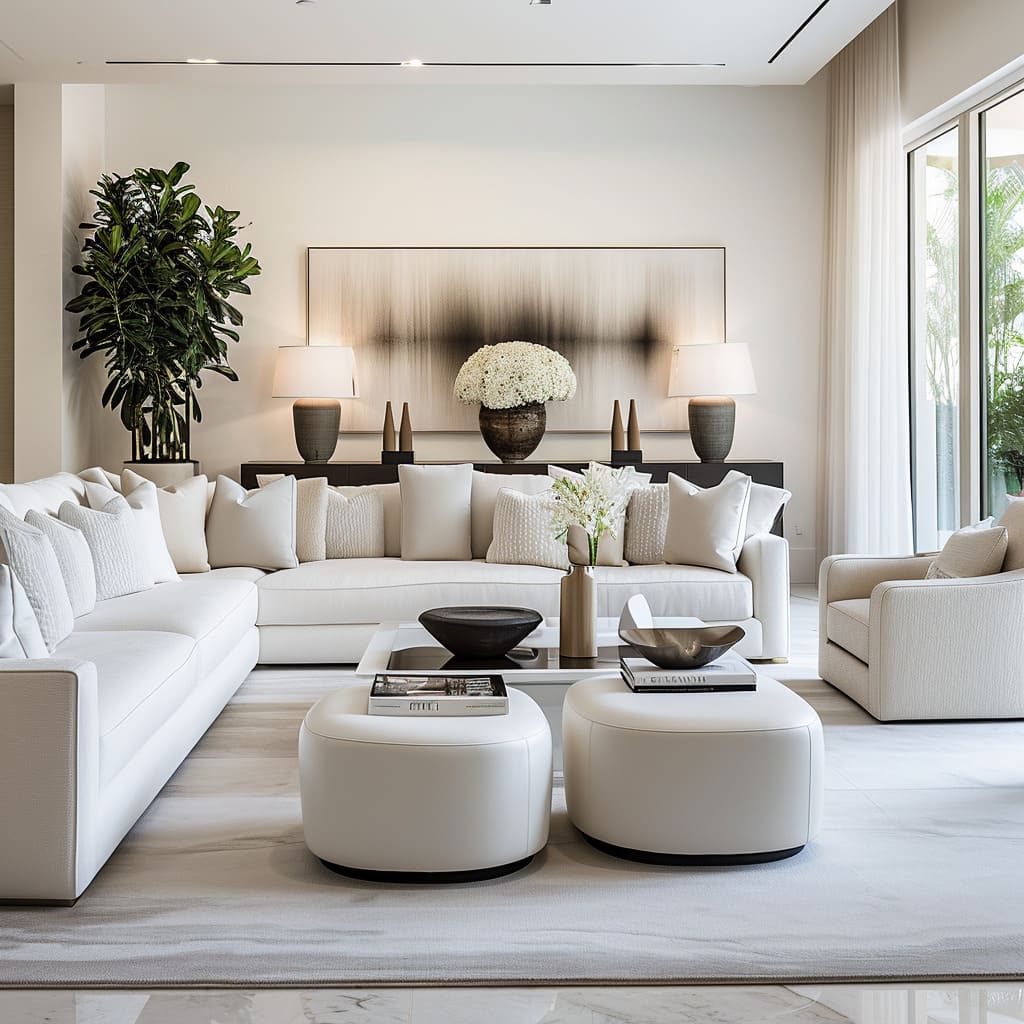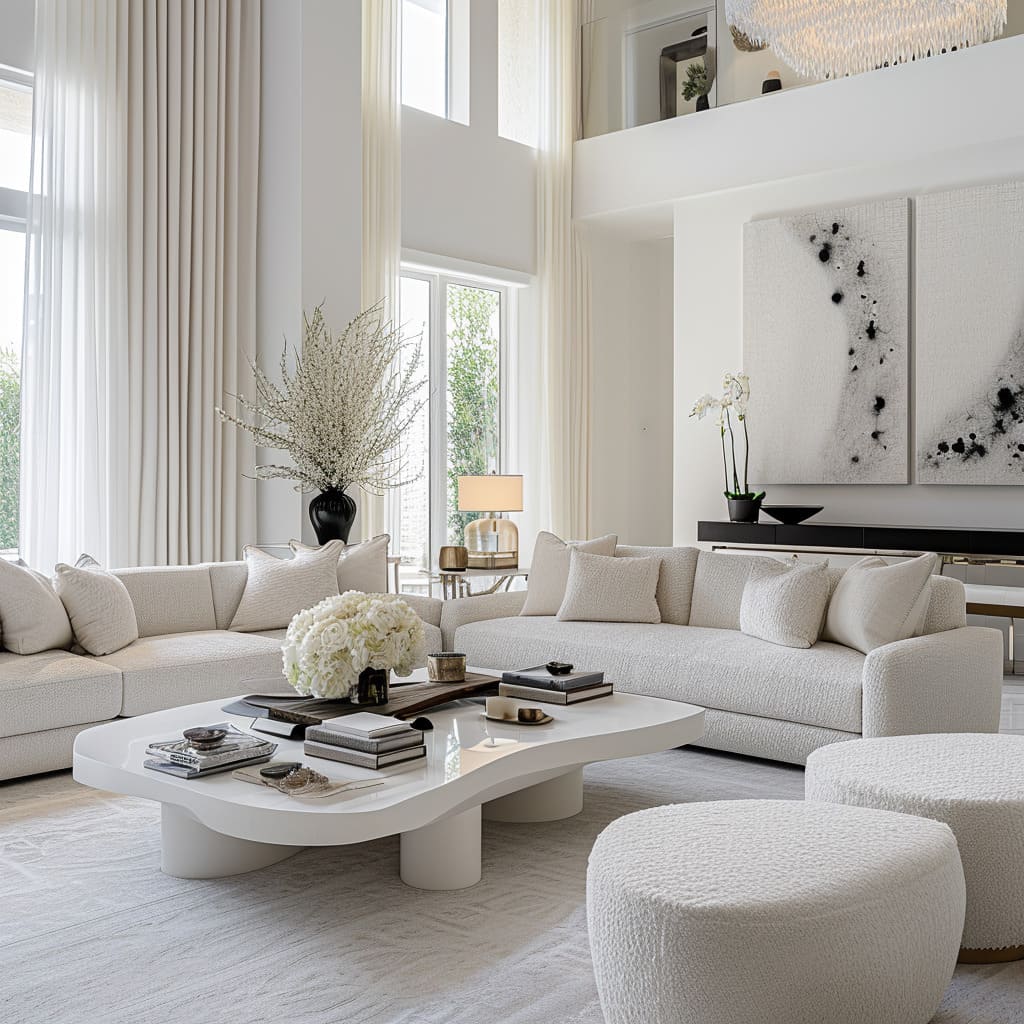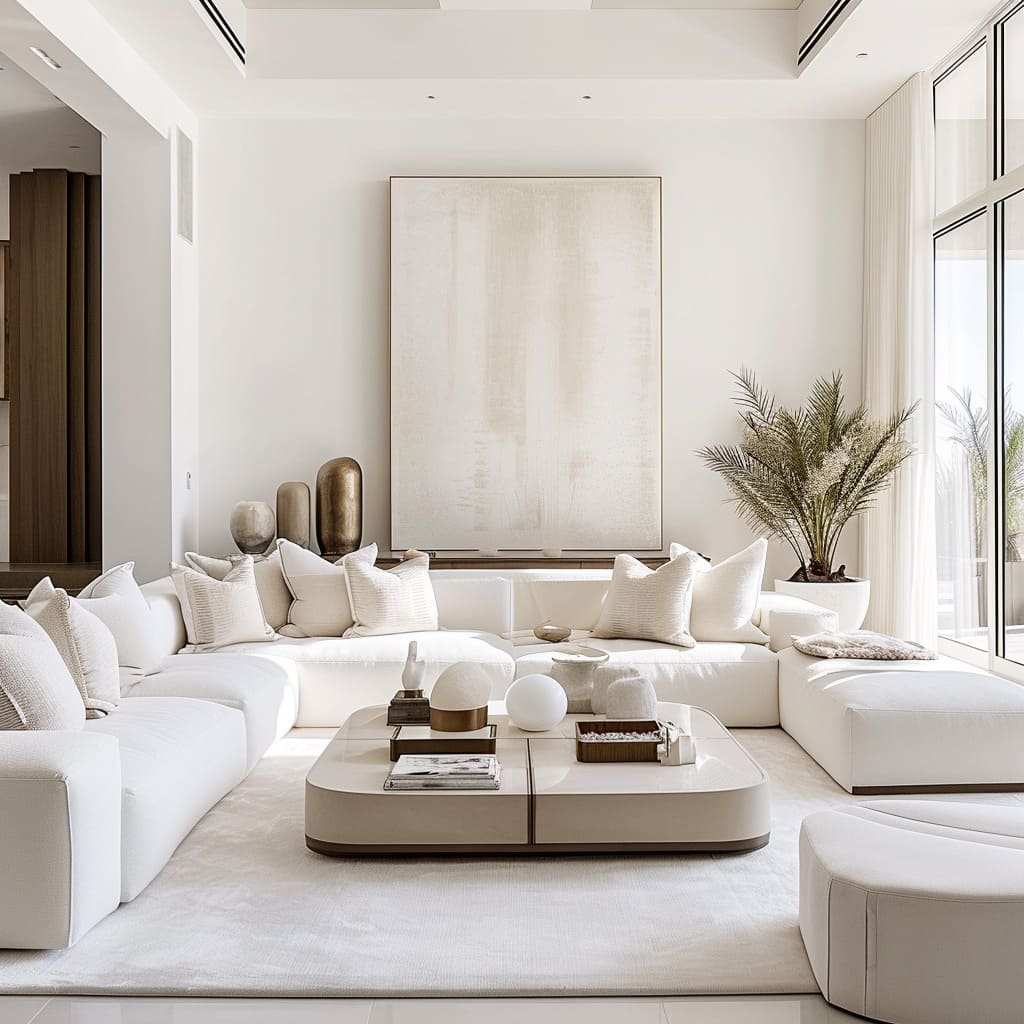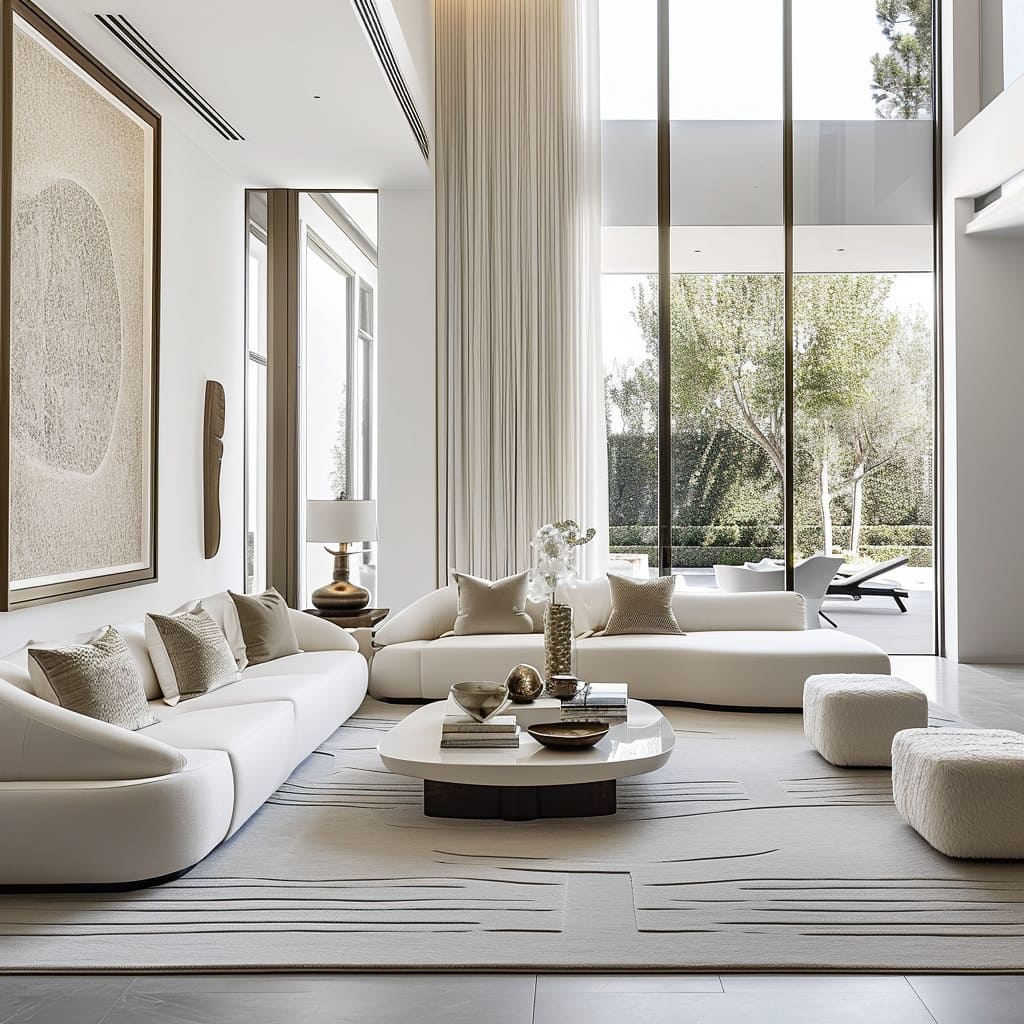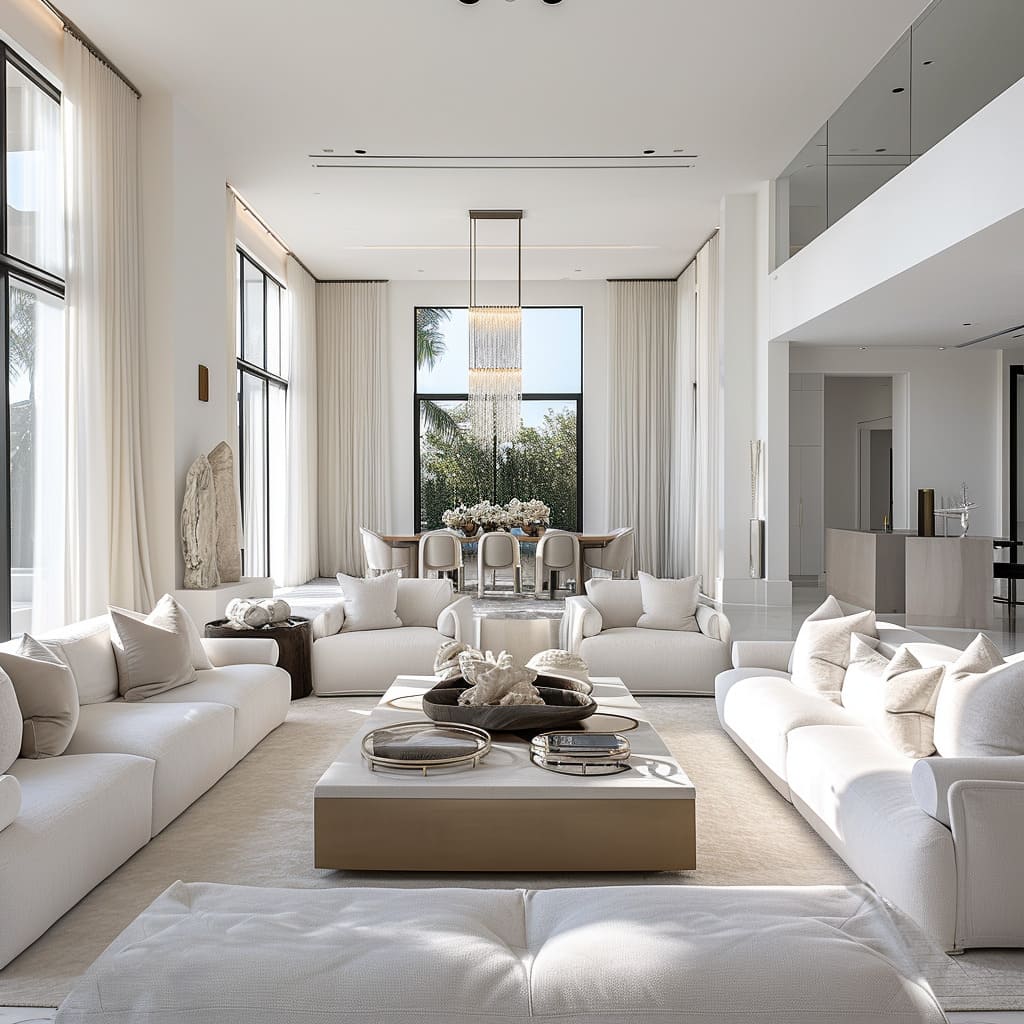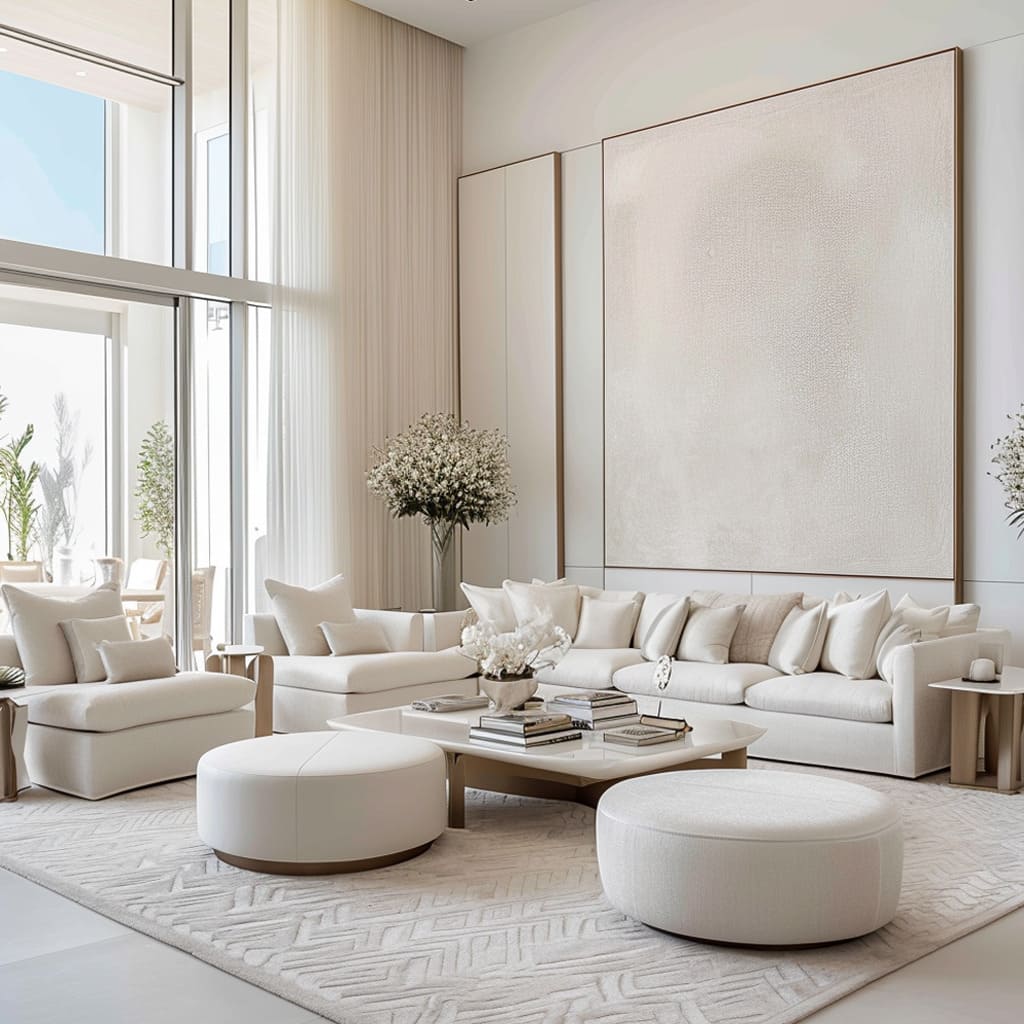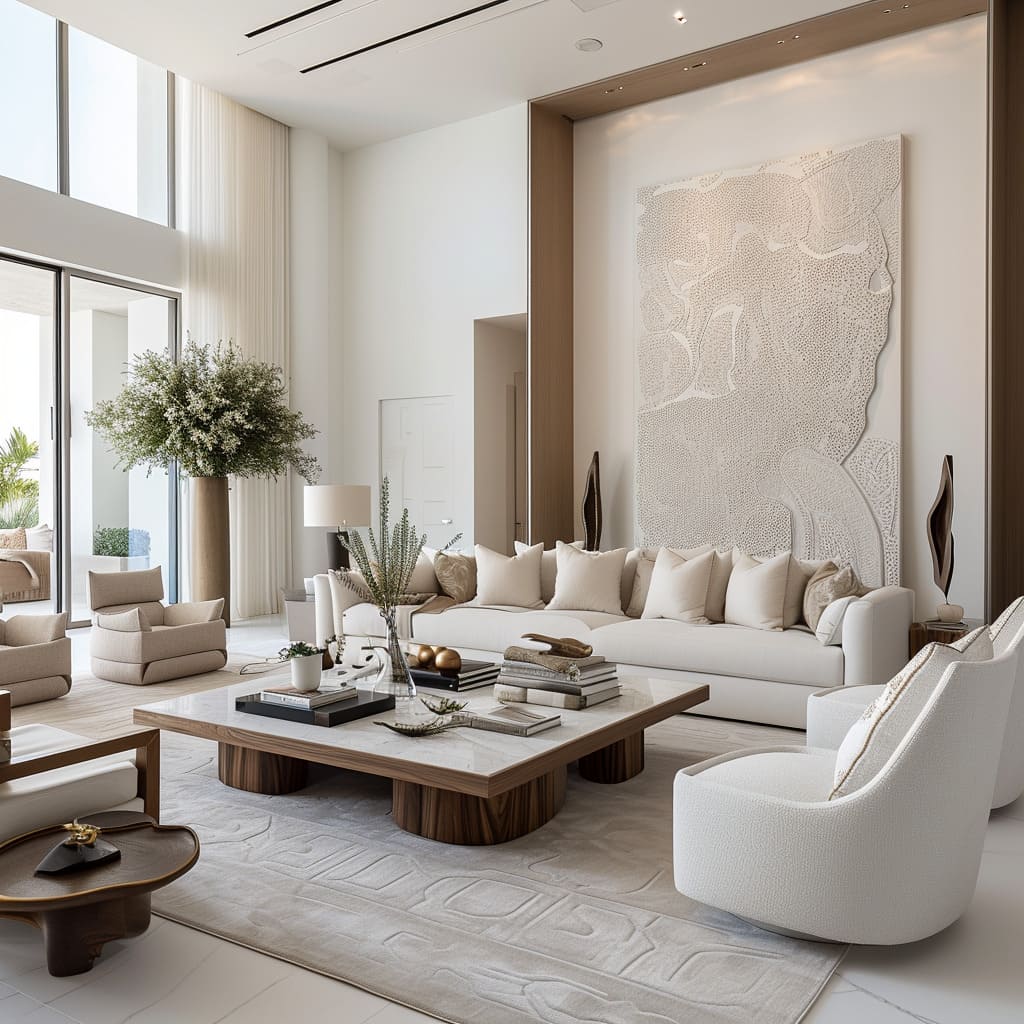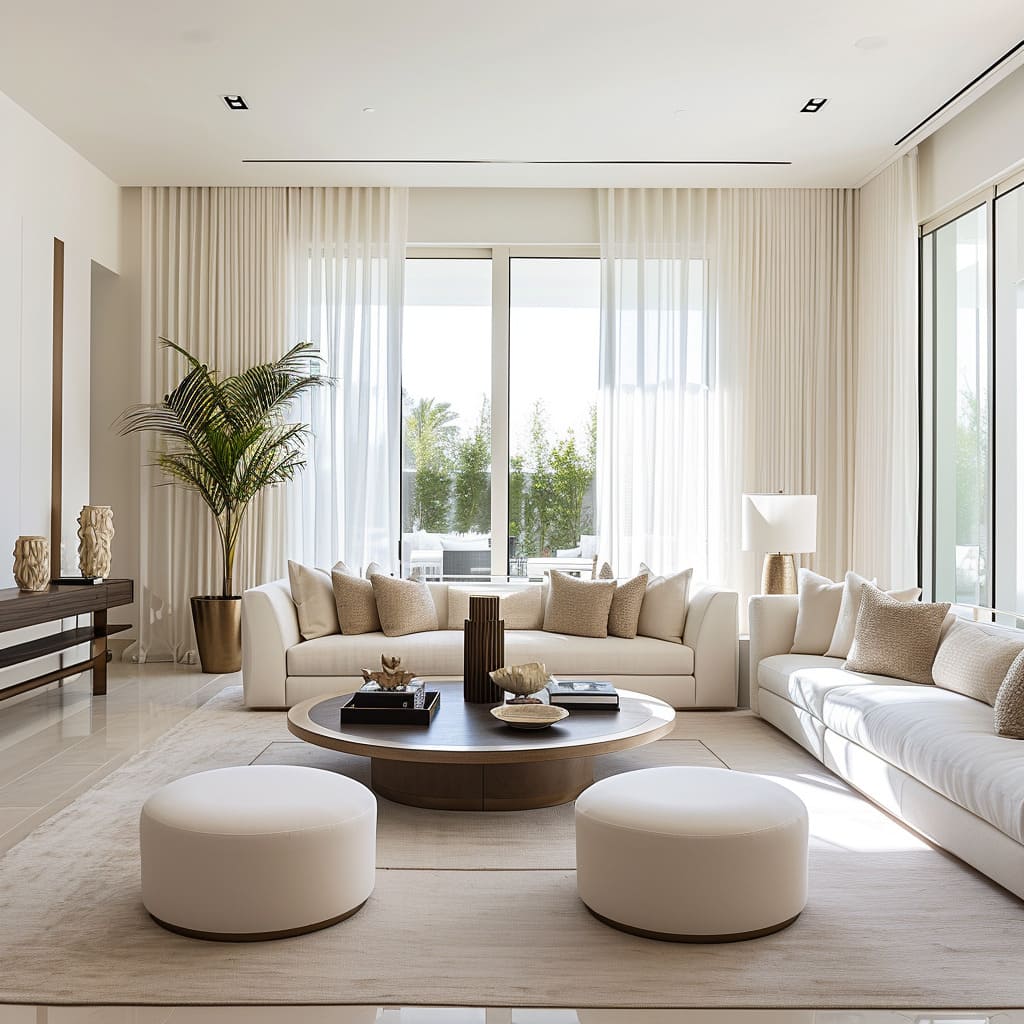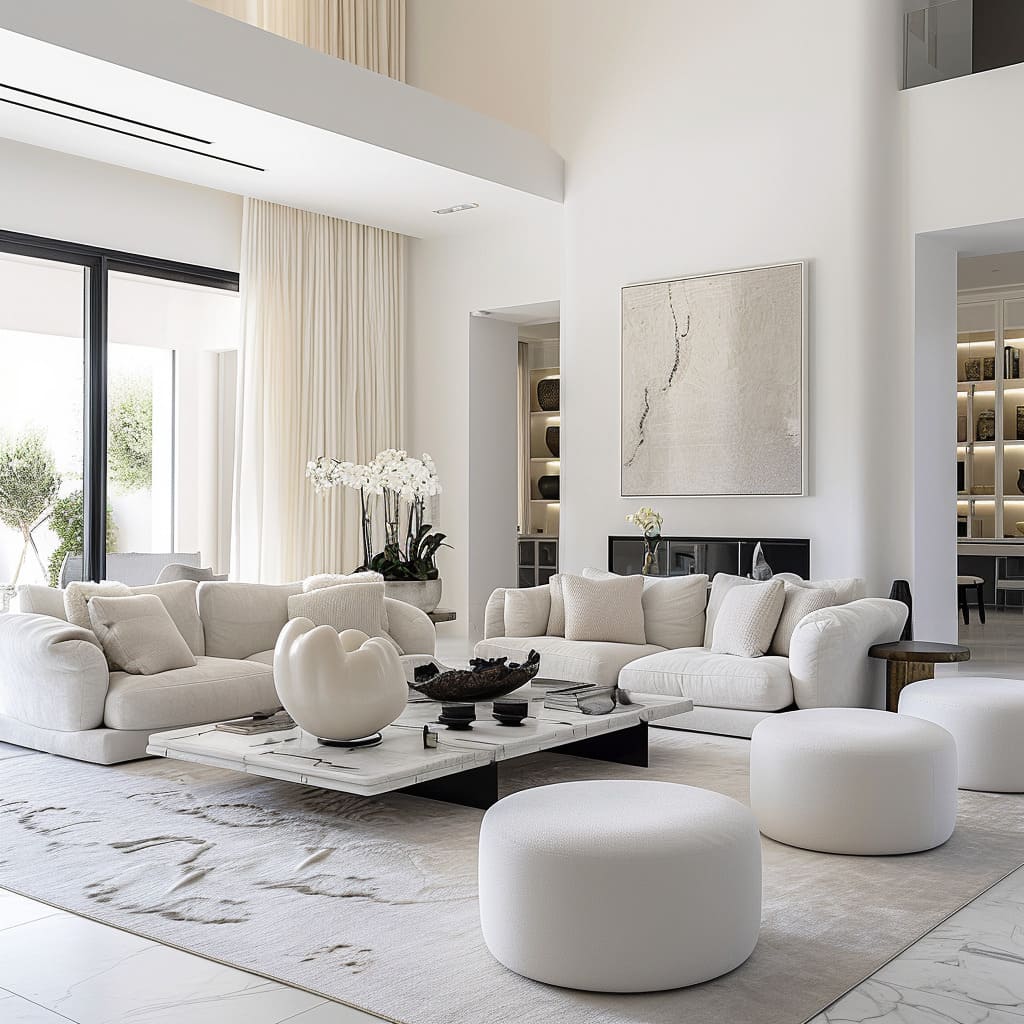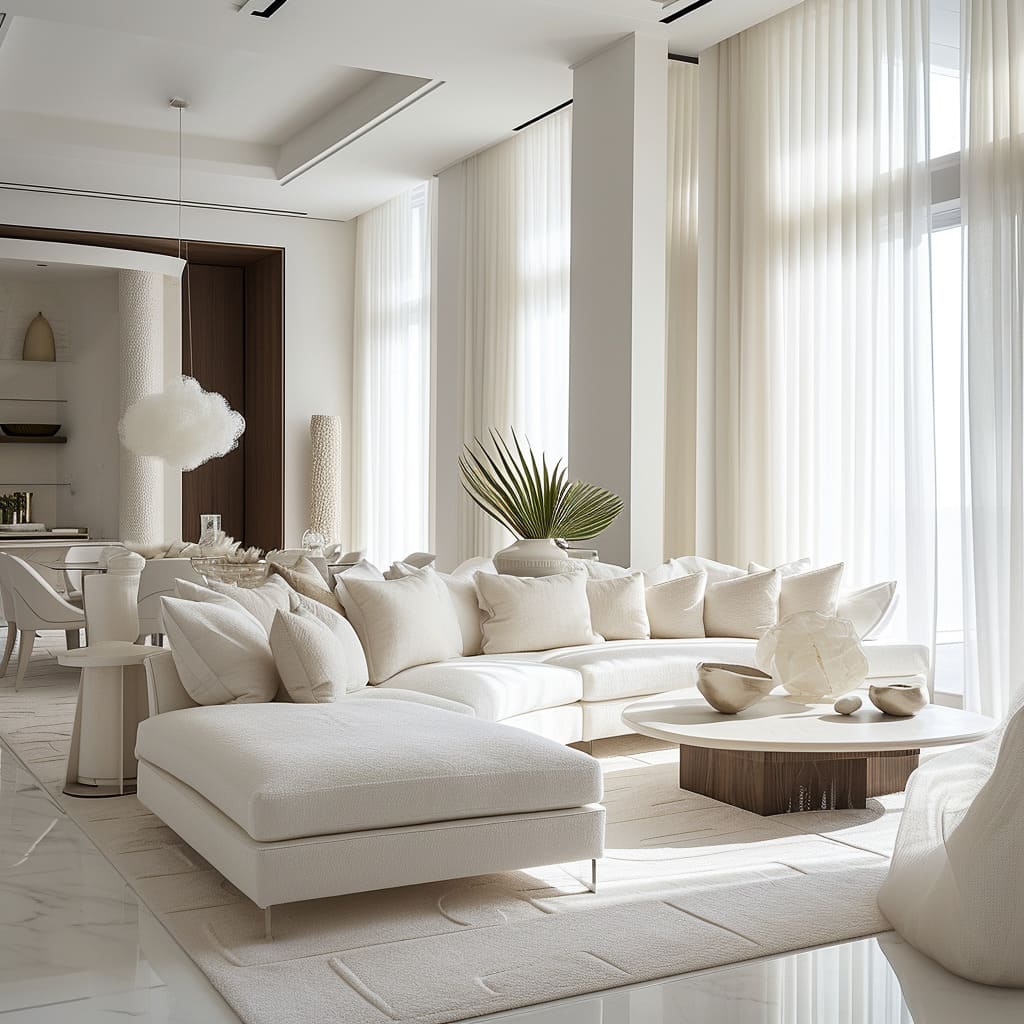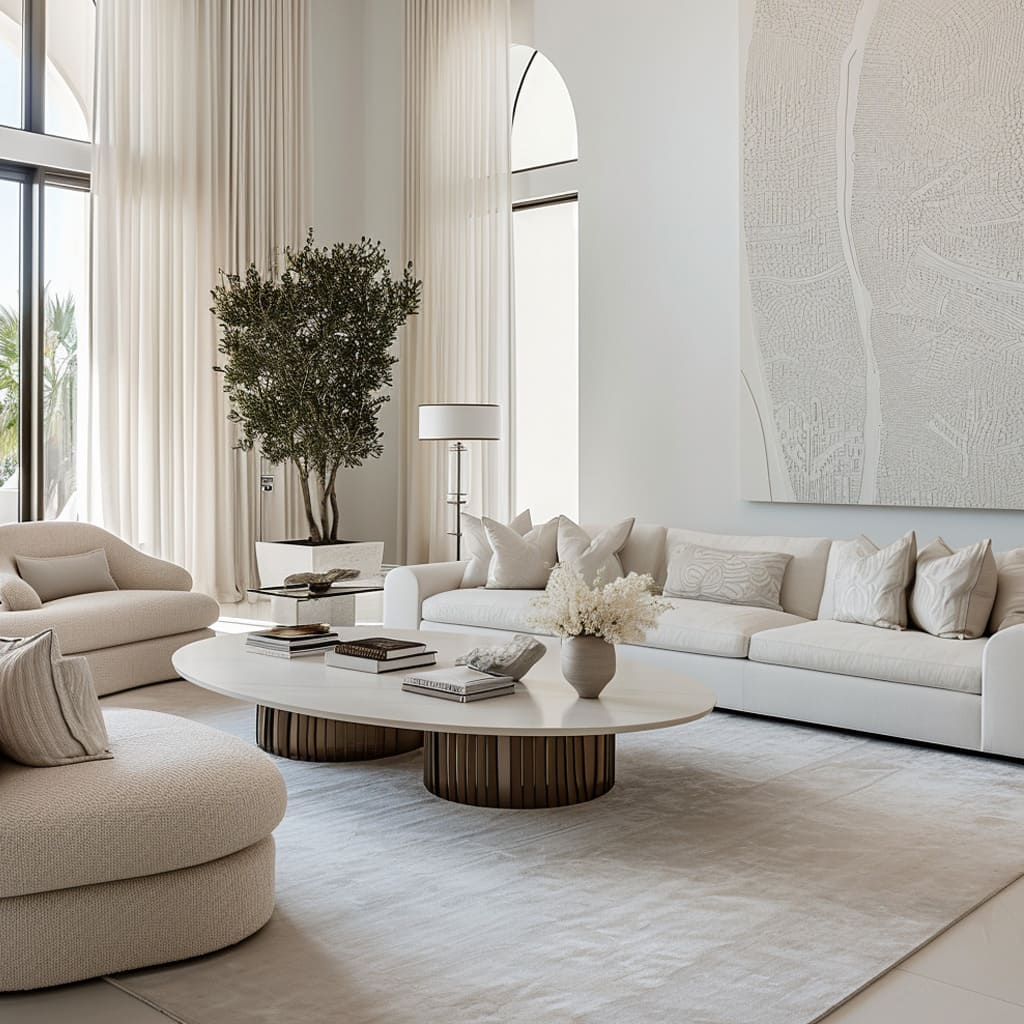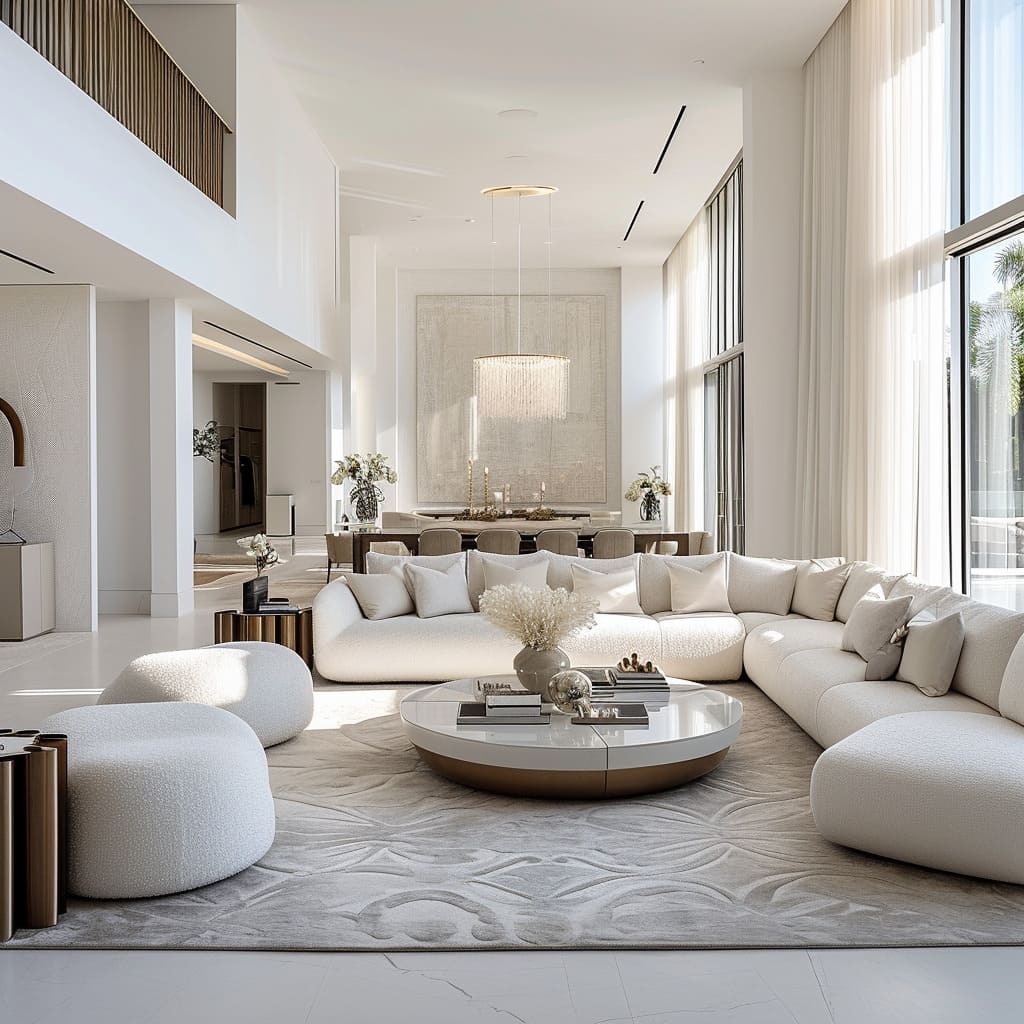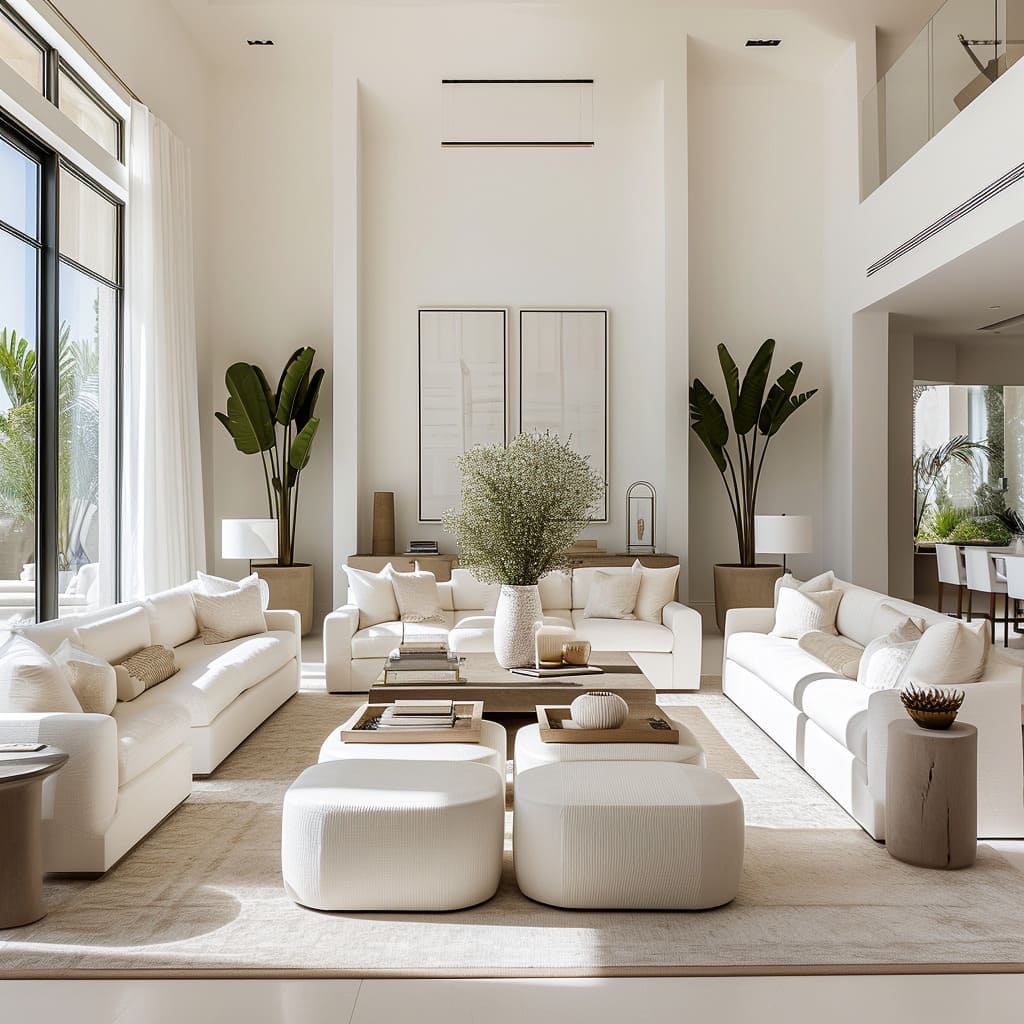Welcome to the serene world of contemporary minimalist interior design—a design ethos that celebrates space, light, and simplicity. Here, the philosophy of ‘less is more’ is not merely an aesthetic choice but a lifestyle, encouraging us to find beauty and tranquility in uncluttered and intentional living spaces.
In this realm of design, simplicity is elevated to an art form, where each object and design choice is thoughtfully considered, and only those that serve a purpose or spark joy are given a place. The clean lines, unobtrusive color palettes, and tactile textures combine to create a backdrop that promotes peace and mental clarity.
As we guide you through the fundamentals of this design strategy, we’ll explore the power of a harmonious color scheme, the elegance of furniture with purposeful form, and the magic of natural light in crafting an inviting and harmonious home environment.
Transform your living spaces with the principles of contemporary minimalism. We will provide you with the insights and inspiration needed to create an abode that is not only visually stunning but also a sanctuary of calm, highlighting the sophistication that can be achieved when every element is reduced to its essence.
The main features of Modern Simplicity in Interior Design:
The living room interior design images in this article showcase a contemporary style with a minimalist approach, emphasizing neutral color palettes, natural light, and a blend of textures and materials. Here are the main features of such interior design, an explanation of its beauty, and recommendations to achieve this in your house:
Neutral Color Palette
The predominant use of white and beige is not just aesthetically pleasing but psychologically soothing, promoting a stress-free living environment. This deliberate choice facilitates the infusion of colors through accessories or artwork, allowing for versatility in decor with minimal effort.
The neutrality of the palette serves as a versatile backdrop that can adapt to seasonal decor changes or evolving design trends without requiring a complete overhaul.
Texture Variation
The interplay of textures in a neutral space engages the sense of touch and adds layers of sophistication. It’s the subtlety of a knitted throw, the roughness of a sisal rug, or the softness of a chenille pillow that invites interaction and comfort.
The mastery of texture variation also lies in its ability to define zones within the space, creating cozy nooks or highlighting areas without the use of partitions or color.
Natural Light
Expansive windows do more than just brighten the room; they create a seamless transition between the indoors and the outdoors, making the room feel larger and more welcoming. Careful consideration of window treatments ensures privacy without sacrificing daylight, and mirrors strategically placed can amplify light, making it a dynamic design element throughout the day.
Organic Shapes
The furniture’s soft curves are a gentle rebuttal to the rigid lines often found in modern architecture, offering a visual respite and promoting a sense of ease. These organic forms mimic the asymmetry found in nature, which can be inherently pleasing to the eye, and help to foster an environment that feels grounded and relaxed.
Artistic Decor Elements
The curated selection of art and decor speaks to the inhabitant’s personal style and breaks the monotony of the neutral palette without overpowering it. These elements act as conversation starters and inject a layer of personality and creativity into the space, making it unique and lived-in.
Layering of Lighting
The use of various light sources allows for the creation of different moods and settings within the same space, from bright and invigorating to soft and serene. Accent lights highlight the textures and shapes of the interior, while ambient lighting establishes the overall warmth of the room, demonstrating how light can be both functional and decorative.
Open Space
The strategic use of space is indicative of thoughtful design, offering freedom of movement and the flexibility to adapt the room’s purpose to the occasion. The open space is not just physical but visual as well; clear lines of sight to other rooms or the outdoors expand the living area beyond its walls, encouraging social interaction and a communal experience in the home.
Recommendations for Achieving such Contemporary Minimalist Look:
Creating a home that embodies the tranquil and sophisticated vibe of contemporary minimalist design requires a thoughtful approach to both aesthetics and functionality. Here’s how you can achieve this look in your home:
Paint and Color
When selecting your neutral palette, aim for consistency in undertones to maintain a cohesive look throughout your home. For example, if you choose a cool off-white for the walls, select furniture pieces with cool-toned accents.
This harmonious approach to color will enhance the feeling of unity across different spaces. Additionally, using a matte finish on walls can help to diffuse light, reducing glare and giving a soft ambiance to the room.
Furniture
In selecting furniture, prioritize comfort alongside style, ensuring that pieces are not only aesthetically pleasing but also offer practical comfort for everyday use. To break up the uniformity, you can mix textures and materials within your furniture pieces—such as a leather armchair alongside a fabric sofa.
This adds visual interest and tactile diversity, enriching the sensory experience of the space.
Lighting
Beyond sheer curtains and dimmable lights, consider adding floor lamps and table lamps to provide warmth and depth in the evenings. The placement of these light sources can create vignettes of illumination, highlighting design elements and creating pockets of coziness.
Warm LED bulbs can replicate the golden glow of sunset, ideal for relaxing evenings.
Art and Decor
Choose art that not only complements the color scheme but also resonates with you personally, as art is a reflection of your taste and can be a source of joy and inspiration. Similarly, with decor, the pieces you select should not just fill a space but should have a purpose, whether it’s to evoke a memory, to serve a function, or simply to bring you pleasure when you see it.
Flooring
Light flooring can show dirt easily, so choose materials that are easy to clean and maintain. Underfloor heating can also be considered for added comfort, particularly in cooler climates.
When selecting area rugs, think about the size and placement—large rugs can anchor a space and define seating areas without the need for physical barriers.
Plants
When integrating plants, select varieties that thrive indoors and require light levels similar to what your space offers. Consider the pot’s design as an extension of your decor, choosing ones that complement the room’s aesthetic.
Besides visual appeal, plants can improve cognitive function and reduce stress, enhancing the living space’s overall wellbeing.
Declutter
Effective storage solutions should be both functional and stylish, blending seamlessly with the room’s design. Closed storage can hide everyday items, while open shelving can be used to display curated decorative objects.
Remember that decluttering is an ongoing process; regularly reevaluate your possessions to ensure that everything in your space has value and purpose.
In conclusion, achieving the contemporary minimalist look in your home is about creating a space that blends aesthetics with practicality.
By choosing a soothing neutral color palette, selecting furniture with clean lines, layering lighting for ambiance, incorporating art and decor that reflect your personal style, and choosing flooring that complements the sense of space, you can create a haven that is both stylish and welcoming.
Adding plants can bring life and a touch of nature indoors, while a commitment to decluttering can maintain the serene vibe.
Remember, this design approach is not just about following a trend but about creating a personalized space that feels both peaceful and functional. With careful consideration and a focus on simplicity, you can transform your home into a beautiful and restful sanctuary that resonates with the elegance and simplicity of contemporary minimalist design.
If you’re looking for more Swedish design, check out these modern Scandinavian interior design ideas.


